have their own Jollibee



said Jose Miñana, Jollibee Foods Corporation's Group President for North America. "There's no greater joy for us than serving the needs and tastes of Jollibee fans in the community. At Jollibee, we aim to bring families together for happy moments over great tasting food with superior value, served with warm and friendly service –our own brand of joy." The brand has become a symbol of nostalgia and warm childhood memories for many overseas Filipinos in the U.S. To many, Jollibee is the go-to restaurant of Filipinos for both special

See JOLLIBEE page 15

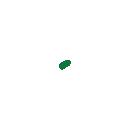








With the opening, Floridians will get to try Jollibee's signature menu items such as the world famous Chickenjoy. This dish is delicately breaded to be crispylicious on the outside and juicylicious inside. The well-loved Jolly Spaghetti is a favorite of both kids and kids-at-heart because of its signature sweetstyle sauce, loaded with chunky slices of savory ham, ground meat, and hotdog. Other classic menufavorites include the juicy and cheesy Jolly Hotdog, and the Peach Mango Pie, which is made with real Philippine sweet mangoes and a flaky golden brown crust.

HARVEST edition THE ENDORSED PUBLICATION OF THE FLORIDA BLUEBERRY GROWERS ASSOCIATION www.FloridaBlueberryGrowers.org volume 10 | issue 3 | spring 2021 TOPICS OF THE SEASON Management Strategies From Petal Fall to Postharvest
MIGHTY MITES Tips for Controlling Southern Red and False Spider Pests DETERMINED, NOT DEFEATED Florida Growers Regroup After Disappointing Trade Ruling ESSENTIALS OF PRUNING How to Minimize Stress, Shape Plants and Promote Growth PRSRT STD US POSTAGE PAID WEST PALM BEACH,FL PERMIT NO. 4595 ipation and excitement, Jollibee, the largest Asian restaurant company, is now open in Jacksonville. This is the 36th store in the US, as well as the first in the state and Southeast US. It opened to the public on March 18, 2017. Jacksonville is the most populous city in the Sunshine State, as well as home to the largest FilipinoAmerican community in Florida. The longawaited arrival of Jollibee in the city has anticipate seeing not only a multitude
Jollibee patrons waiting to get their hands on
Jollibee favorites,
waiting to
experi-
FIGHT THE
of excited
their
but also first-timers
ence,"





2 | The Blueberry News FloridaBlueberryGrowers.org www.ThunderbirdPlastics.com Canada (Main Office): 1.888.778.2473 Western USA: 1.800.297.5201 | East & Central USA: 1.800.809.2035 Choose your style, size, color, and your custom hot-stamped name and logo. UV-resistant Durable Freezer-safe Recyclable Reusable To get your quote call us at: Delivered the best for the best We manufacture the highest quality, industry-proven perfect for harvest, processing, storage and transport. BLUEBERRY CONTAINERS
20 DETERMINED, NOT DEFEATED





Rockville, MD When it comes to American cuisine, there are few things more iconic than steakhouses. The slabs of marbled meat, the sizzling grills, the oozing butter, and the dripping bravado, maybe even a cowboy hat or two for ambiance—it's enough to make even fictional steakophile Ron Swanson misty-eyed. Yet for all the traditional steak dinners ordered daily, there are restaurants nationwide pushing the concept of the all-American steakhouse to new culinary heights, according to market research firm Packaged Facts
United States blueberry growers swallowed a bitter pill this winter after their plea with the U.S. International Trade Commission to stem the tide of imported blueberries. In a unanimous vote in February, the commission ruled that imports weren't injurious to their production. Learn how growers are reacting to the decision.







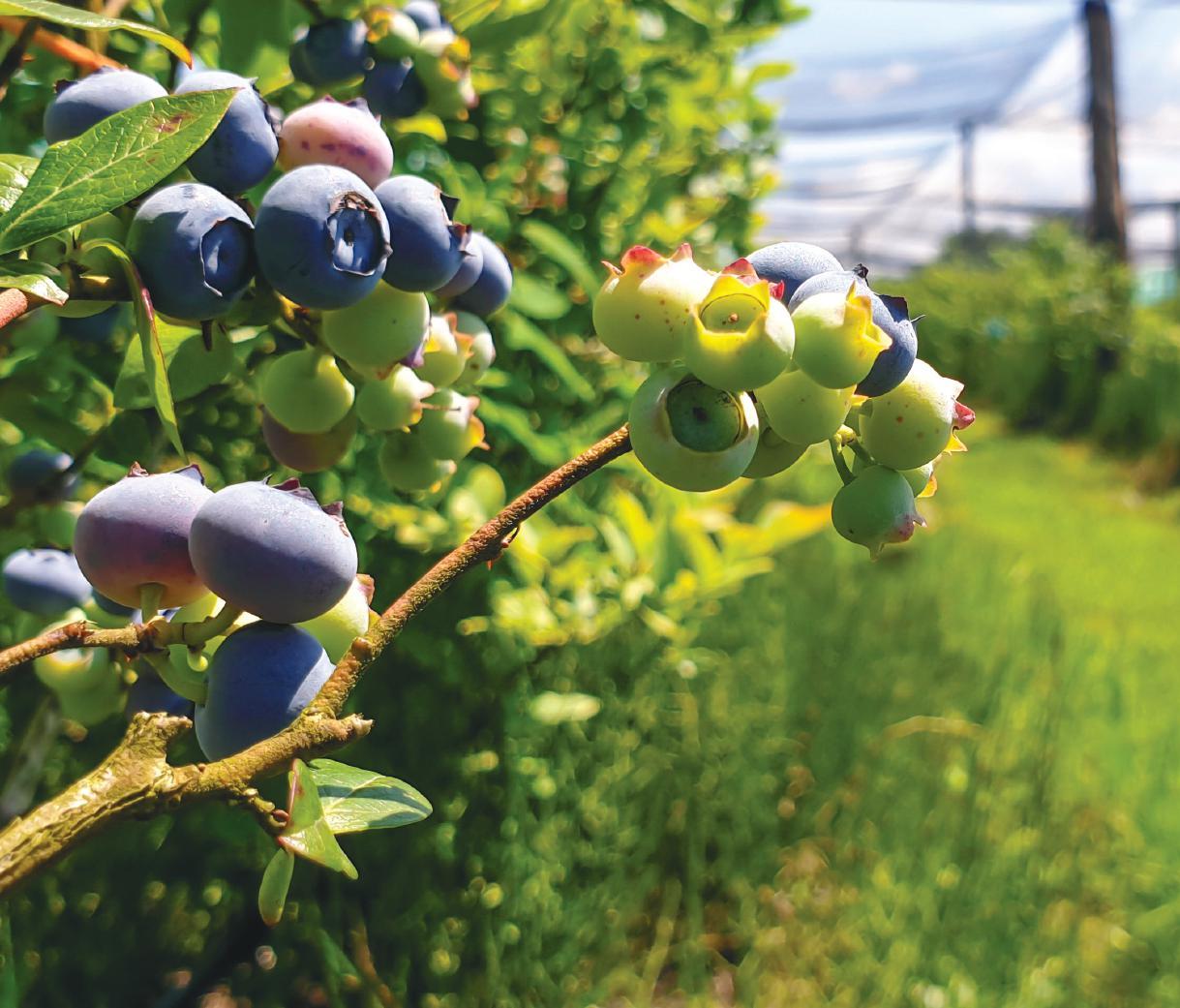
22 FIGHT THE MIGHTY MITES






Mite damage can be significant on blueberries, and high infestations can result in defoliation. The southern red mite is the primary pest in both open-field and protected production on southern highbush blueberry in Florida. The false spider mite, or flat mite, was first reported on SHB in 2016, and is more typically seen during the summer. Find out how to protect your crop from these pests.
36 ESSENTIALS OF PRUNING
Pruning is an essential practice for commercial blueberry production. Pruning can be used to minimize plant stress, shape plants for mechanical harvest or other operations, promote growth of new fruiting wood, balance reproductive and vegetative growth, reduce incidence of pests and diseases, control plant size, and promote new cane development. Check out these other great pruning tips.
been the talk of the town since 2016. With the opening, Floridians will get to try Jollibee's signature menu items such as the world famous Chickenjoy. This dish is delicately breaded to be crispylicious on the outside and juicylicious inside. The well-loved Jolly Spaghetti is a favorite of both kids and kids-at-heart because of its signature sweetstyle sauce, loaded with chunky slices of savory ham, ground meat, and hotdog. Other classic menufavorites include the juicy and cheesy Jolly Hotdog, and the Peach Mango Pie, which is made with real Philippine sweet mangoes and a flaky golden brown crust.
FloridaBlueberryGrowers.org The Blueberry News | 3 4 Executive Director's Letter 6 President's Letter 8 Angle's Letter 8 USHBC Update 10 Grower 411 11 Topic of the Season 20 Publisher's Interlude 24 Growers' Thoughts 28 Seasonal Challenges 35 Classifieds ON THE COVER It’s harvest time for Florida blueberry growers! After a trying year, growers are optimistic about the crop and the return of U-pick. We speak with growers from around the state to see how the season is shaping up. Read more on PAGE 24. HARVEST edition THE ENDORSED PUBLICATION OF THE FLORIDA BLUEBERRY GROWERS ASSOCIATION www.FloridaBlueberryGrowers.org volume 10 | issue 3 | spring 2021 TOPICS OF THE SEASON Management Strategies From Petal Fall to Postharvest FIGHT THE MIGHTY MITES Tips for Controlling Southern Red and False Spider Pests DETERMINED, NOT DEFEATED Florida Growers Regroup After Disappointing Trade Ruling ESSENTIALS OF PRUNING How to Minimize Stress, Shape Plants and Promote Growth Appetizer s: Entrées: Advertisers Directory 2 Appell Pie 2 Calendar Events 10 Classified Ads 14 What’s Going On 3 Analysis:Cateringindustryrevenuesontherise 4 “Big Data” — Doesyourrestaurantneedit? 7 RiseBisquitsDonutstoopeninCoralSprings 11 Del Taco spices up expansion in the Southeast 13 PRSRTSTD USPOSTAGEPAID BEACH,FLPALMWEST PERMITNO.4595 WWW.TRNUSA.COM VOLUME 21 NUMBER 3 ◆ MARCH 2017 FLORIDA’S FOODSERVICE INDUSTRY NEWSPAPER ◆ $3 FLORIDA EDITION Jollibee's U.S. expansion continues with first Florida location opening Jacksonville, FLAfter much anticipation and excitement, Jollibee, the largest Asian restaurant company, is now open in Jacksonville. This is the 36th store in the US, as well as the first in the state and Southeast US. It opened to the public on March 18,2017.Jacksonville is the most populous city in the Sunshine State, as well as home to the largest FilipinoAmerican community in Florida. The longawaited arrival of Jollibee in the city has "As Jollibee debuts in Florida, we anticipate seeing not only a multitude of excited Jollibee patrons waiting to get their hands on their Jollibee favorites, but also first-timers waiting to have their own Jollibee experience," said Jose Miñana, Jollibee Foods Corporation's Group President for North America. "There's no greater joy for us than serving the needs and tastes of Jollibee fans in the community. At Jollibee, we aim to bring families together for happy moments over great tasting food with superior value, served with warm and friendly service –our own brand of joy."Thebrand has become a symbol of nostalgia and warm childhood memories for many overseas Filipinos in the U.S. To many, Jollibee is the go-to restaurant of Filipinos for both special
See JOLLIBEE page 15 and sustainable sourcing, local and seasonal produce, and global flavors and forms, all done within the steakhouse format showcasing cuts of meat as entrées with a choice of sides. Moreover, new menu categories (such as flatbreads) and service elements freshen the concept. About the Report 2017
on
ingre-
Packaged
to
in popularity
2017.
in the brand new report 2017 Forecast: Culinary Trend Tracking Series. "The steakhouse is back and will capture our attention in 2017. Not that the classic restaurant style ever disappeared, but a renewal of the model is taking place in response to new sources of beef and new flavorful expressions of the concept that get chefs and diners excited," says David Sprinkle, research director, Packaged Facts. Today's steakhouse menus increasingly feature grass-fed cattle, locally raised animals, heritage varieties, meat butchered and dry aged in-house, and dishes that stem from the whole animal, not just the premium cuts. And that's just the meat. Creative side dishes in lieu of old standards, global and seasonal flavors, and a wider menu selection also distinguish these new school operations. Chefs and consumers both want their meat to taste delicious and to feel good about its’ consumption, too. This new breed of steakhouse broadcasts its mission to support local ranchers, factor in sustainability and animal welfare, and create a dining experience that showcases culinary flair, not just a grill master's skill at cooking steak to the requested doneness. These operations are also designed to be more inclusive, more of a great place for all kinds of people to dine well, not just traditionminded men on expense accounts. As a result, the modern steakhouse is increasingly similar to other modern restaurants with a focus on distinctive 2017 forecast:Steakhouses beef up menus with new twists on American classics See STEAKHOUSE page 11
Forecast: Culinary Trend Tracking Series offers an outlook
the culinary trends—the foods, dishes,
dients and flavors—that
Facts expects
grow
in
Irrigation Services of
Inc
Central Florida,
Durden - Irrigation Specialist
Newly Installed After One Year
“Agriculture Irrigation is our specialty –when you need an experienced, reliable and proven irrigation company, call on us, you won’t be disappointed! As a grower, we know your irrigation needs.”
Jimmy
863-875-5524 Cell 863-287-1166 / Fax 863-875-5582 email irrigationservices@hotmail.com 510 US Hwy 92 East / Auburndale, FL
Washington Failing to Help Florida Blueberry Farmers
LIKE MOST OF YOU, my blueberry farm is family-owned. Our Florida industry is made up of more than 900 blueberry farms across the state, and collectively we employ 2,500 workers and generate an annual economic impact of $295 million. But this year, we face a challenge to our livelihoods. We’re being pounded by a flood of lowpriced blueberry imports from Mexico, Peru and other countries.
Florida is the first location in the U.S. to harvest blueberries every year. Some of you started harvesting earlier this month and we will continue harvesting in Florida until the end of May. The story has been well reported by now, and you know how the massive increase in Mexican imports during our harvesting season has affected your farms. It is crippling the Florida blueberry industry.
Over the period from 2009 to 2019, we saw imports from Mexico increase by 2,111 percent.
The impact of these imports is falling prices and a loss of market share, which is a major and direct hit for our Florida family farms. In 2016, we saw prices in the first week in April (Week 15) that were as high as $8.23 per pound. But last year, in 2020, the week 15 price was less than half of that – only $3.45 per pound.
Mexico blueberry growers are targeting our critical harvest season with their imports. The same is happening in Georgia, Michigan, California and other states that grow blueberries through the spring and summer months. The main reason Mexican imports are able to undersell Florida growers is that our farmers, and American farmers in general, are at a tremendous disadvantage in farm labor and harvesting costs. Mexican producers pay only a tenth of what Florida farmers pay. Our blueberries are ethically sourced with higher food safety and environmental standards than exist in other countries.
Blueberry consumption has increased as more people appreciate the health benefits of this crop, so we should be enjoying a boom in sales. But blueberry imports have surged by 62 percent since 2015. Besides Mexico, other countries exporting blueberries — Argentina, Canada, Chile and Peru — have also ramped up production to sell into the American market. The result is falling blueberry prices that are devastating the balance sheets and business prospects of blueberry farmers here and in other states.
We sought relief from Washington. But the U.S. International Trade Commission (ITC) concluded an investigation by deciding that blueberry imports are not harming our farmers. As a result, imports will continue to flood into our market this season and beyond. The outcome of this investigation reveals deficiencies in our trade laws and puts the long-term viability of the domestic blueberry industry — and family farms like mine — in jeopardy.
During the investigation, we received support from members of Congress and state elected officials — including Sen. Marco Rubio and Nikki Fried, Florida’s agricultural commissioner —many agricultural groups, and we plan to work with them on other remedies to ensure that American consumers continue to have access to fresh, high-quality, safe, domestically grown blueberries.
FBGA will continue to advocate for you, the Florida Grower.
We will continue to keep trade laws that adversely affect our industry in front of our legislators.
I will continue to keep trade laws that adversely affect you in front of our legislators.
Brittany H. Lee
Brittany H. Lee, Executive Director, Florida Blueberry Growers Association
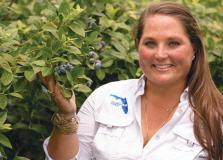
fbga.ed@gmail.com
PUBLISHER
Nelson Kirkland
MANAGING EDITOR
Jessica McDonald
MARKETING DIRECTOR & DIGITAL SPECIALIST
Morgan Driggers
ACCOUNT EXECUTIVE
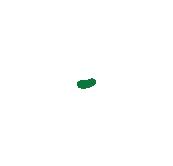









Juanita Halter
LIAISON EDITORS
Brittany H. Lee, Doug Phillips, Jeff Williamson, Oscar E. Liburd
CONTRIBUTING WRITERS
Doug Phillips, Jeff Williamson, Oscar E. Liburd, J. Scott Angle, Philip F. Harmon, Patricio Munoz, Julie Butterfield, Teresa Schiffer, Lorena Lopez
CONTRIBUTING ARTISTS
Dawn Lewandowski, Lori Kornilow
DELIVERY
DLS Distributors

PHONE



advertisers will be held responsible, nor do the publishers accept any liability for the accuracy of statements made by advertisers in advertising and promotional materials. Furthermore, the opinions and claims expressed in advertisements and promotional materials do not necessarily reflect those of the Florida
Group and do not imply an endorsement.
4 | The Blueberry News FloridaBlueberryGrowers.org executive director’s letter
www.FloridaBlueberryGrowers.com Published by Central Florida Media Group in cooperation with the Florida Blueberry Growers Association Copyright © 2021 Central Florida Media Group. ALL RIGHTS RESERVED. This issue of The Blueberry News is a trademark of Central Florida Media Group. Reproduction or use in whole or in part of the contents of this magazine without written permission is prohibited. The Blueberry News makes every effort to ensure the accuracy of content published. In the event of an error found herein however, neither the publishers
Growers Association
Central
56 Fourth Street Northwest, Suite 100 Winter Haven, Florida
or
Blueberry
or
Florida Media
863.248.7537

FloridaBlueberryGrowers.org 5
P.O. BOX 358086
Gainesville, FL 32635
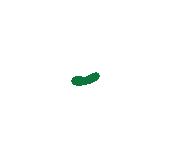


352-448-1418

OFFICERS
Brittany Lee, Executive Director fbga.ed@gmail.com
Leonard Park, President president.fbga@gmail.com
Jerod Gross, Vice President fbga.vp@gmail.com
Michael Hill, Secretary michael@handafarms.com
Bobby Barben, Treasurer rhbjr@barbenfruit.com
We’re Coming to a Crossroads
It’s no secret that Florida Blueberry growers are facing ever-increasing challenges to the well-being of our industry. Despite the nicely expanding demand for blueberries, this positive trend is swamped by a massive explosion of imported fruit flooding our coveted early domestic market. Despite the progress made by the USHBC in capturing a larger “share of mind” with consumers, convincing more and more people of the convenience and health benefits of blueberries, it is not enough to turn the tide. An increase of tens of millions of pounds of fruit from other countries is a tidal wave inundating our short market window resulting in much lower prices even as the cost of producing quality, food-safe Florida fruit pressures our growers.
This trend is set to continue, and whether we like it or not we are coming to a crossroads. Some growers have decided to throw in the towel, which I hope will not become a disturbing trend. I am optimistic most of us will not be discouraged and choose to stay the course. Throughout history, farmers have worked hard and adapted to serious challenges. If we decide to, we can turn our fortunes around in favor of our Florida blueberry farms.
So what direction do you want to take? I submit that we, as the Florida blueberry grower industry, need to adopt a “few critical priorities.” Tackling these industry challenges in a meaningful way will require a higher level of commitment, both in industry effort and resources.

To get the ball rolling, I might suggest these “few critical priorities” as industry candidates:
• Improving productivity and quality through research and education
BOARD OF DIRECTORS
Wayne Bass
Jerod Gross
Phil Harmon
Gary Smith
Kyle Straughn
Jeff Williamson
Doug Phillips
Travis Kuhn
• Implementing better crop forecasting tools

• Developing more effective trade and legislative approaches
• Increasing consumer demand for truly Fresh Florida blueberries


Likewise, I encourage our individual growers to focus on their own few critical priorities. Hopefully, they are aligned with fellow growers and the industry as a whole.
As an individual grower, a “few critical priorities” I might suggest are:




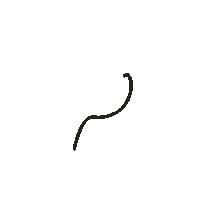



• Ramping up production innovation and technology to lower costs of labor, nutrition, water and crop protection
• Upgrading to improved varieties for higher yield, better timing, machinability and fruit quality
• Adopting better data capture and information tools to drive better, faster decisions
• Developing better relationships with food chain decision-makers
There are other, likely better, priorities to focus on in the coming years. Our Florida blueberry industry needs to choose which road to turn down pretty soon. Please set your farm’s “few critical priorities” and help our grower industry make the right turn as we enter the intersection.
Leonard Park President Florida Blueberry Growers Association

6 | The Blueberry News FloridaBlueberryGrowers.org
president’s letter


To build a better blueberry, the University of Florida’s Institute of Food and Agricultural Sciences is building a better blueberry lab in Gainesville. By mid-2022, we expect to complete U.S. higher education’s premier blueberry breeding headquarters.
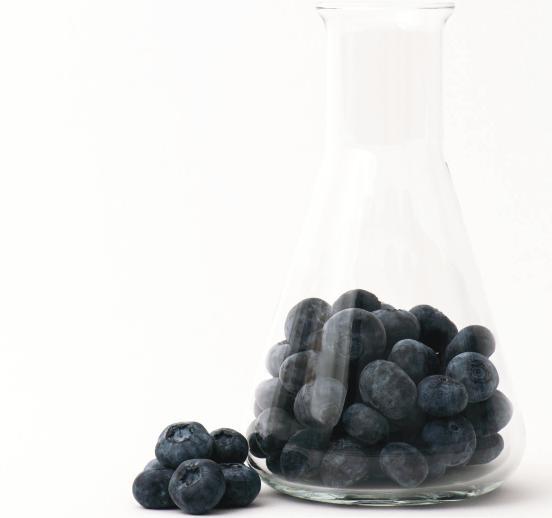
What we’re currently calling the Blueberry Building is scheduled to break ground this month. It will be the hub for breeding the cultivars that keep you in business and a step ahead of your international competitors.
We’ve long had the best minds in blueberry breeding. We need a place to put them.
Patricio Muñoz has doubled the size of his lab team in his four years as the university’s lead blueberry breeder, and he projects that in the next two to three years it will grow to triple what he started with in 2017.
A world-class facility will bring us world-class status. We’re going to build the blueberry equivalent of the UF/IFAS Honey Bee Research and Extension Lab, which immediately distinguished us as among the nation’s best in the science of pollinators and the support center for a burgeoning backyard beekeeping movement.
Before we even move a shovel full of dirt, the vision of the Blueberry Building is attracting more minds. Muñoz recruited two top graduate students to join his team by showing them blueprints as well as blueberries, the plans to provide the tools to go from conception to creation.
The $4 million, 9,500-square-foot structure will build in collaboration and efficiency that’s been lost in work from home or in staggered shifts imposed by the current cramped quarters. It gives us space to pick up the pace for micropropagation. That will get new cultivars into your fields faster.
It won’t be the first UF/IFAS facility that blueberries built. Alto Straughn’s generosity made possible the construction a decade ago of the Extension professional development center that bears his name. The new building will house breakthroughs in breeding. It will also have a large lecture hall and laboratory classrooms to continue preparing College of Agricultural and Life Sciences students to become top professionals.
We have a national crisis in agricultural science infrastructure. A study done for the Association of Public and Land-grant Universities last year estimates the national need for upgrades at $11.5 billion.
Government assistance is unlikely to meet that need. The Blueberry Building will be funded largely by royalties. We can do that because we have one of the nation’s most aggressive royalty reinvestment rates.
It’s a case of innovation begetting more innovation. The more successful we are, the more we can invest in your future success.
J. Scott Angle

jangle@ufl.edu
@IFAS_VP

USHBC’s New Branding Drives Demand and Passion for Blueberries
The U.S. Highbush Blueberry Council (USHBC) hit the ground running in early January with its new brand positioning and consumer call to action, Grab A Boost of Blue. Targeting a variety of audiences, the new positioning works to make the deliciousness, convenience, unique color, and health benefits of blueberries appealing and relevant to every demographic and lifestyle:
• The busy parent looking for simple, tasty, healthy food swaps to inspire their kids’ eating habits.
• The trendsetter searching for the coolest cocktail or unexpected food and flavor pairings.
• The active weekender seeking convenient, versatile, and refreshing grab-and-go snacks for a hike, trail ride, picnic, or road trip.
• The health enthusiast who doesn’t want to give up taste for nutrition.
• The foodie hunting for innovative ways to delight the palate.
• The entertainer with an eye for adding a tasty and colorful punch to the charcuterie board or grazing plate.
A catchy roll-off-the-tongue phrase, the literal words make this strategic positioning effective to garner attention and increase demand:
GRAB = Motivates a strong call to action (easy, versatile, durable, convenient)
A BOOST = Promotes energy, health, great taste OF BLUE = Captures the unique blue color that is a visual feast for the eyes and pops off the plate!
USHBC’s robust 2021 national consumer promotion program includes digital advertising, media relations, social media outreach, influencer programs, and more, and is driving results. For example, a comprehensive media relations program, utilizing health experts as spokespeople to carry the blueberry health and nutrition messaging, garnered 193 million impressions during Heart Health Month in February. Digital advertising during
8 | The Blueberry News FloridaBlueberryGrowers.org
J. Scott Angle is the University of Florida’s Vice President for Agriculture and Natural Resources and leader of the UF Institute of Food and Agricultural Sciences (UF/IFAS).
Planning a World-Class Blueberry Lab update
Patricio Muñoz
March’s Frozen Food Month via a demanddriving Instacart campaign moved 90,000 units and almost $500,000 in sales. To engage promotion at the retail level, USHBC is also in development on four new volume-driving promotion research projects with major retailers and marketers.
“While our national program is showing strong results in the first quarter, true success of this long-term campaign will come when the entire blueberry industry gets involved,” said USHBC’s vice president of marketing and communications, Jennifer Sparks.
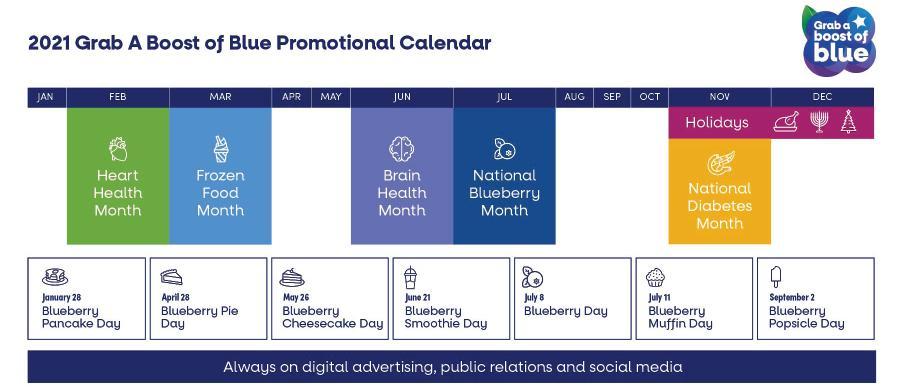

USHBC makes it easy for growers, marketers, and retailers alike to capitalize on the movement. A complete howto toolkit and a wealth of readyto-use materials are available at your fingertips at ushbc. blueberry.org/BoostToolkit. You’ll also find individual toolkits added throughout the
year to support you in promoting upcoming promotion “power periods” such as Brain Health Month (June) and National Blueberry Month (July). Industry members can also gain access to the Grab A Boost of Blue logo to add to their own unique promotional pieces by getting licensed at ushbc.blueberry.org/license. Once a licensing agreement is signed, you’ll receive the free collection of Grab A Boost of Blue logos
and the accompanying Brand Style Guide.
“As an industry, we have a huge opportunity to move beyond creating awareness of this healthy bunch of blue delight, to turning blueberry consumers into blueberry enthusiasts to drive demand” added Sparks. “There’s no better time than now to get on board.”
FloridaBlueberryGrowers.org The Blueberry News | 9
Nutrition GET STRONGER, MORE PREDICTABLE GROWTH WITH A BALANCED RATIO OF ESSENTIAL NUTRIENTS IN EVERY GRANULE. Rainbow Plant Food is a homogeneous, granular fertilizer. Precise amounts of each nutrient – primary and secondary- as well as micronutrients, are chemically compounded together ensuring that each granule contains nearly identical amounts of the nutrients your plants need for optimum growth. Your blueberries will get an even distribution of the nourishment required to achieve top quality performance and higher yields. ©2021 Nutrien Ltd; Rainbow, Nutrien logos and designs are registered trademarks owned by Nutrien Ltd. 03/21-74770-6 Discover what Perfectly Balanced Nutrition can do for your blueberries. RainbowPlantFoodProducts.com 74770-06_RBW_2021_PerfectBalance_Blueberry_7-5x5.indd 1 2021-03-25 7:18 AM
Perfectly Balanced
CREDIT
by DOUG PHILLIPS, UF/IFAS Blueberry Extension Coordinator

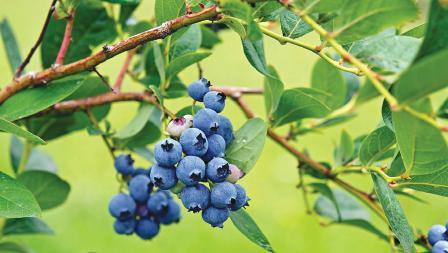

Spring and Early Summer Blueberry Management Items





The table below lists suggested blueberry management items for spring and early summer. Suggested management items for the entire calendar year have just been released in a new EDIS publication, Calendar for Southern Highbush Blueberry Management in Florida edis.ifas.ufl.edu/pdffiles/ HS/HS136300.pdf). Specific disease, insect, and weed controls are listed in the 2019 Florida Blueberry IPM Guide edis.ifas. ufl.edu/pdffiles/hs/hs38000.pdf), as well as in subject-specific publications referenced below. Also, a list of all UF EDIS blueberry publications can be found at blueberrybreeding. com/blog, along with a summary description and link to each.
APRIL
Disease
Apply recommended fungicides in rotation for control of anthracnose and/or Alternaria fruit rot; promptly harvest and cool ripe fruit. One tool growers may consider in timing spray applications is the Blueberry Advisory System (BAS) at agroclimate.org/BAS, which indicates when weather conditions are favorable for the development of anthracnose fruit rot.
Insect Pests

Monitor for gall midge and flower thrips and control as needed. Spray recommended insecticides to control spotted wing drosophila (SWD), and promptly harvest ripe fruit. If living north of Lake City and there is a history of blueberry maggot, establish yellow sticky traps to monitor for blueberry maggot adults. Also, in infested areas, start scouting for adult Diaprepes (citrus) root weevils, and adult flatheaded borers on the blueberry foliage. No pesticide is labeled in blueberry for citrus root weevil and flatheaded borer; however, some of the cover sprays for spotted wing drosophila will control these pests. See UF EDIS Publication ENY999, Diaprepes Root Weevil on Southern Highbush Blueberry in Florida (edis.ifas.ufl.edu/pdffiles/IN/IN124100.pdf).
Post-harvest, spray to control blueberry bud mite if present or observed in the prior season.
Weeds
Apply post-emergence herbicide if weeds are at densities that hinder bush growth. See UF EDIS Publication HS90, Weed Management in Blueberry (edis.ifas.ufl.edu/pdffiles/WG/WG01600.pdf).
continued on page 15
10 | The Blueberry News FloridaBlueberryGrowers.org
of the season
Management Strategies From Petal Fall to Postharvest
by JEFFREY G. WILLIAMSON, Horticultural Sciences Department, PHILIP F. HARMON, Department of Plant Pathology, OSCAR E. LIBURD, Entomology and Nematology Department, and PETER DITTMAR, Horticultural Sciences Department, all with the University of Florida/IFAS.

The following tables were updated from the 2019 UF/IFAS Florida Blueberry Integrated Pest Management Guide found at edis.ifas.ufl.edu/hs380. This publication is intended for use only as a guide. Specific rates and application methods are on the pesticide label, and these are subject to change at any time. Always refer to and read the pesticide label before making any application! The pesticide label supersedes any information contained in this guide, and it is the legal document referenced for application standards.
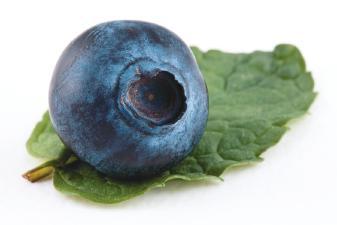

POLLINATOR PROTECTION
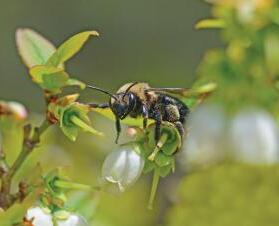
Before making insecticide applications, monitor insect populations to determine if treatment is needed. If insecticide application is necessary:
1. Use selective pesticides to reduce risk to pollinators and other non-target beneficial insects.
2. Read and follow all pesticide label directions and precautions. The label is the Law! EPA now requires the addition of a “Protection of Pollinators” advisory box on certain pesticide labels. Look for the bee hazard icon in the Directions for Use and within crop specific sections for instructions to protect bees and other insect pollinators.
3. Minimize infield exposure of bees to pesticides by avoiding applications when bees are actively foraging in the crops. Bee flower visitation rate is highest in early morning. Apply pesticides in the late afternoon or early evening to allow for maximum residue degradation before bees return the next morning. Bee foraging activity is also dependent upon time of year (temperature) and stage of crop growth. The greatest risk of bee exposure is during bloom.
4. Minimize off-target movement of pesticide applications by following label directions to minimize off-target movement of pesticides. Do not make pesticide applications when the wind is blowing towards bee hives or off-site pollinator habitats.
TABLE 5. MANAGEMENT STRATEGIES FOR PEST AND DISEASE PROBLEMS IN PREHARVEST BLUEBERRIES
Resistance to this fungicide in the ripe rot pathogen is common in central Florida. Use a captan product in a tank mix where resistance is known. Subsequent applications can be made at 7- to 14-day intervals. Do not apply more than two sequential applications before switching to a fungicide with another mode of action (e.g., Switch®). Do not apply more than 1.44 qt. per acre per season.
11–14 oz. +++++ 12 h 0 days
Applications can be made at 7- to 10-day intervals when conditions warrant. Do not apply more than 56 oz. of product per acre per year. Make no more than two sequential applications before using another fungicide with a different mode of action.
continued on next page
FloridaBlueberryGrowers.org The Blueberry News | 11 topic
Pest/ Problem Management Options Amount of Formulation per Acre Effectiveness (Least = + to most = +++++) REI (restricted entry interval) PHI (postharvest interval) Comments Ripe rot (anthracnose) and/or Alternaria rots Azoxystrobin (Abound®) 6.2–15.4 fl. oz. +++++ 4 h 0 days
Cyprodinil + fludioxonil (Switch® 62.5WG)
topic of the season
continued from previous page
TABLE 5. PREHARVEST BLUEBERRY DISEASE MANAGEMENT, CONT.
No more than two sequential applications of Pristine® should be made before alternating with fungicides that have a different mode of action. Do not apply more than four applications of Pristine® per acre per crop year. Do not mix Pristine® with anything other than captan. Captan (Captan 50
Do not apply more than 70 lb. per acre per crop year. Captan (Captec
Metconazole (Quash®)
Prothioconazole (Proline 480 SC)
Fluopyram + Pyrimethanil (Luna Tranquility)
oz. ? 12 h 7 days
5.7 fl oz. ? 12 h 7 days
16–27 fl oz. ? 12 h 0 days
Do not apply more than 35 qt. per crop year.
Do not make more than three applications per acre per crop year. Alternate with a fungicide with another mode of action.
Make up to 2 applications per year on a 7–10 day schedule. A tank mix with Captan is recommended for resistance management and to provide Botrytis suppression.

Do not apply more than 54.7 fl oz per acre per year. Rotate to a different fungicide group after no more than 2 applications. Reapplication interval is 7 to 14 days. No efficacy data for this product are available for blueberry in Florida. Only Luna Tranquility is labeled by supplemental label for blueberry in Florida.

NOTE: No more than two sequential applications of Pristine® should be made before alternating with fungicides that have a different mode of action. Do not make more than four applications of Pristine® per acre per crop year. Mix Pristine® with only water for applications to blueberry.
TABLE 6. MANAGEMENT STRATEGIES FOR PEST AND DISEASE PROBLEMS IN HARVEST BLUEBERRIES
Blueberry maggot fly (BBM): Blueberry maggot is only a problem for growers north of the Lake City and Live Oak areas. Growers in Gainesville and south of Gainesville should not experience any problems with blueberry maggot. Blueberry maggot is a late-season pest. If berries are infested with BBM, a whitish maggot will appear in the fruit at harvesting. The adult fly that lays the eggs can be monitored by hanging yellow sticky traps (baited with ammonium acetate) within the bush canopy, at least one per cultivar. Trap catches indicate when adults are present. Traps should be hung in the planting when berries begin to turn from full green to the greenish-pink stage. See your county Extension agent for identification pictures and further reference. If your planting has a history of BBM infestation, spray as soon as adults are trapped. Once spraying for BBM begins, it is very important to spray every 7–14 days until all the fruit has been harvested. Materials and spray intervals are listed below. All growers in Florida who are shipping blueberries to Canada or the United Kingdom must comply with appropriate guidelines for scouting, spraying, and postharvest inspection of berries, including a protocol for cooking samples of harvested fruit to test for the presence of the maggot in berries. The Canadian protocol states that blueberries must be certified maggot free to enter Canada.
continued on page 14
12 | The Blueberry News FloridaBlueberryGrowers.org
Pest/ Problem Management Options Amount of Formulation per Acre Effectiveness (Least = + to most = +++++) REI (restricted entry interval) PHI (postharvest interval)
18.5–23
Comments Ripe rot (anthracnose) and/or Alternaria rots Pyraclostrobin + boscalid (Pristine® WG
oz.. +++++ 24 h 0 days
5 lb.
WP)
+++ 72 h 0 days
4L®) 2 qt. +++ 72 h 0 days
2.5
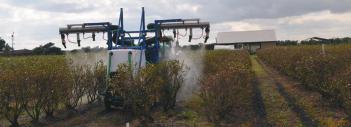
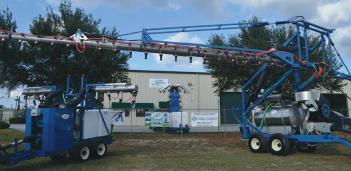





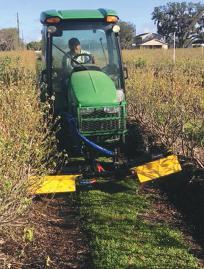


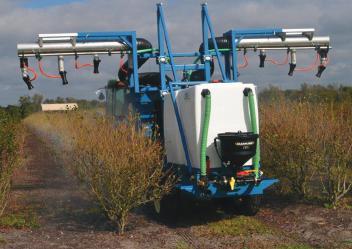






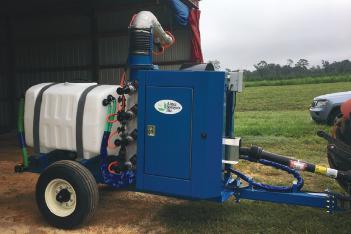


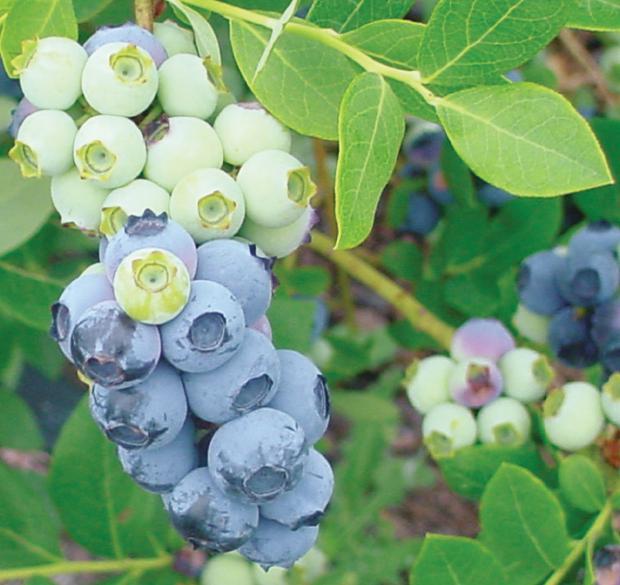
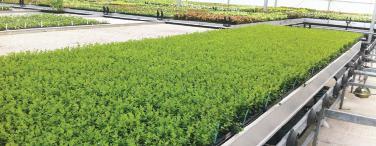
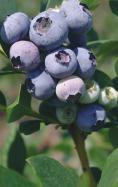



FloridaBlueberryGrowers.org The Blueberry News | 13 AIR BOOM SPRAYERS WE HAVE A SPRAYER FOR EVERY SIZE BLUEBERRY FARM! SKID W/GUN SPRAYER INJECTION TRAILERS HERBICIDE SPRAYER CANNON SPRAYERS For more information: Dan Schaal O: (863) 293-5420 C: (863) 412-6247 4202 Hammond Drive, Winter Haven FL 33881 AirTecSprayers.com Dan@AirtecSprayers.com • Low, Medium or High GPA rates • 50-400 Gallon Tanks • Trailer and 3 Point Models • Narrow Designs SINGLE CANNON DOUBLE CANNON CALL TODAY FOR SPECIAL SPRING/SUMMER PRICES Virus indexed plants from tissue culture available in 72ct. cell packs & field ready liners. Agri-Starts, Inc. is a licensed propagator of Florida Foundation Seed Producers, University of Georgia Research Foundation, and University of Arkansas genetics. COME VISIT US ANYTIME! BLUEBERRIES BLACKBERRIES & MORE! AGRISTARTS.COM (407) 889-8055 - info@agristarts.com 1728 Kelly Park Rd. - Apopka, FL 32712 Agristarts Ad 7.5x5.indd 1 9/9/16 5:59 PM Check out our new website at AirtecSprayers.com
topic of the season
continued from page 12
TABLE 6. MANAGEMENT STRATEGIES IN HARVEST BLUEBERRIES, CONTINUED

Spotted wing drosophila (SWD) SWD have been caught in all of the principal blueberry counties in Florida. Adults lay eggs in ripening blueberries, and larvae develop inside the berry, making the fruits soft and unmarketable. Adults can be monitored by placing traps in blueberry bushes. Traps can be made from plastic cups and baited with yeast sugar water. Traps should be placed within the canopy of the blueberry bush and not in direct sunlight. A number of insecticides have recently been registered for control of spotted wing drosophila. (See Spotted Wing Drosophila Pest Management Recommendations for Southeastern Blueberries, http://edis.ifas.ufl.edu/in998.)
Fruit rots: Fungicides alone do not provide adequate control; proper harvesting and handling are essential. Pre- and postharvest rots can be greatly reduced by timely, complete harvest of all ripe fruit on the bush, followed by rapid postharvest cooling. For hand-harvested highbush and southern highbush cultivars, harvest all ripe berries on the bush every 7 days or less. Rabbiteye cultivars should be clean-harvested every 10–14 days. Postharvest cooling is critical and is best accomplished through the use of partial-vacuum or forced-air systems that use fans to pull cold air through stacks of palletized fruit.
Blueberry maggot

Phosmet (Imidan® 70W)
Malathion (Malathion 57
1.3 lb. ++++ 24 h 3 days
Imidan® is the material of choice for managing BBM. BBM sprays should protect berries from the start of oviposition until the last berries are harvested. Imidan® provides 10–14 days residual control. Do not apply more than twice per season. Carbaryl
1.9–2.5 lb. +++ 12 h 7 days BBM sprays should protect berries from the start of oviposition until the last berries are harvested. Sevin® provides 5–7 days of residual effectiveness.
1.5 pt. +++ 12 h 1 day BBM sprays should protect berries from the start of oviposition until the last berries are harvested. Malathion provides 5–7 days of residual control.
continued on page 16
14 | The Blueberry News FloridaBlueberryGrowers.org
Pest/ Problem Management Options Amount of Formulation per Acre Effectiveness (Least = + to most = +++++) REI (restricted entry interval) PHI (postharvest interval)
Comments
80S)
(Sevin®
Diazinon (Diazinon AG500) 1 pt./100 gal. ++++ 24 h 7 days Allow 14 days
Spinetoram Delegate® WG 3–6 oz. +++ 4 h 1 day Do not
more
0r
spinetoram
Tolfenpyrad (Apta) 27 fl oz/acre ++ 12 h 3 days Allow 14 days between applications Spirotetramat (Movento) 8-10 fl oz/ acre +++ 24 h 7 days Minimum interval of 7 days between application Spotted wing drosophila Mustang Max™ 4 oz. ++++ 12 h 24 h Use a minimum spray volume of 20 gal. by ground. Spinetoram Delegate® WG 6 oz. +++ 4 h 3 days Delegate WG is toxic to bees until it is thoroughly dry. Malathion Malathion 57 EC) 1.5 pt. ++++ 12 h 1 day Cyantraniliprole Exirel® 13.5-20.5 oz. ++++ 12 h 3 days Minimum application
Fenpropathrin Danitol 2,4 EC 10.6-16 oz. ++++ 24 h 3 days Do not
Brigade Bifenthrin 5.3 – 16 oz. ++++ 12 h 1 day Do not make more than two consecutive applications.
EC)
between applications.
apply
than 17.9 oz of Delegate
0.28 lb. ai
per acre per season
interval between treatments is 5 days.
make more than two consecutive applications. Rotate with insecticides from different classes.
continued from page 10
Disease
MAY
Monitor for post-harvest leaf diseases (rust, anthracnose, Septoria, target spot, Phyllosticta) and apply recommended control measures. See UF EDIS Publication PP348, Florida Blueberry Leaf Disease Guide (edis.ifas.ufl.edu/pdffiles/PP/PP34800.pdf).

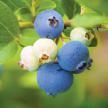

Insect Pests







Continue with insecticide sprays for spotted wing drosophila for the remaining ripe fruit that is left on the bush. Continue monitoring for blueberry maggot in affected areas. Continue monitoring for adult citrus root weevils and adult flatheaded borers in infested areas. Post-harvest, spray to control blueberry bud mite if present or observed in prior season. Scout for chilli thrips (leaf curling and bronzing) and blueberry flea (leaf) beetle (shot holes in the leaf) and apply recommended control measures if present. See UF EDIS Publication EENY2053, Chilli thrips on Blueberries in Florida (edis.ifas.ufl.edu/pdffiles/ IN/IN129800.pdf).
✓ better fruit size
✓ uniform fruit weight and size

✓ reduce your pollination deficit
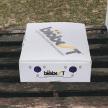
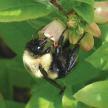
FloridaBlueberryGrowers.org The Blueberry News | 15
Maximize Pollination with 4-Pak TM Personalized solutions, trusted advice Biobest naturally! www.biobestgroup.com Why use Biobest 4-Pak™? • work through inclement weather; wind, rain and cloud cover • 4-Pak™ works as a complement to current pollination strategies • Bumblebees focus on the targeted crop Biobest USA | Toll free 1 (855) 224 6237 customerservice.na@biobestgroup.com 888.296.7533 . WWW.CARDENINSURANCE.COM We keep you growing... carden SPECIALIZED RISK MANAGEMENT FOR THE AGRICULTURE INDUSTRY . CAR DEN & ASSOCIATES, INC.
38
continued on page
topic of the season
continued from page 14
TABLE 6. MANAGEMENT STRATEGIES IN HARVEST BLUEBERRIES, CONTINUED


TABLE 7. MANAGEMENT STRATEGIES FOR PEST AND DISEASE PROBLEMS POSTHARVEST PLANT MANAGEMENT
Blueberry bud mites: This is an occasional pest of blueberries in Florida. Use high-volume (300 gal. per acre), high-pressure (200 psi) applications of a postharvest insecticide/miticide and horticultural oils. In blocks infested with blueberry bud mite, make two postharvest applications using carbaryl. Pruning and removing or destroying old blueberry canes can help reduce bud mite populations. Summer topping or hedging immediately after harvest is a common practice used to manage bush height; this practice also greatly reduces bud mite by removing old, infested fruiting twigs. Blueberry bud mite is a tiny eriophyid mite, best visible with a dissecting microscope. In early ripening cultivars, sanitation in the form of postharvest hedging and cutting back into one- and two-year-old wood should be the primary management response for mite-infested blocks. Postharvest application(s) of carbaryl may be helpful to augment this critical cultural practice.
Imported fire ants: Imported fire ants can be very important pests in orchards, vineyards, or fields. Ant baits employed after harvest into fall as a broadcast treatment should eliminate most, but seldom all, fire ant mounds within treated areas. When ant populations are high, use a dormant or early spring broadcast application in addition to the postharvest application to get better fire ant control. Ant baits are slow acting. They require up to 8 weeks to control active mounds. Worker ants must be attracted to baits so that they will carry the baits back to their colonies. Most ant baits interfere with reproduction, which causes a gradual colony die-off. Extinguish® Professional Fire Ant Bait (0.5% methoprene) is labeled for use on all crop land sites. It is effective, but since it is an insect growth regulator, it is somewhat slower acting than Esteem® Ant Bait (0.5% pyriproxyfen). Ant baits work best when soil is moist but not wet. Active ant foraging is essential. Ideally, temperatures should be warm and sunny. Avoid applying ant baits when conditions are expected to be cold, overcast, rainy, or very hot. Individual mound treatments are most effective when used as needed for the occasional colony that survives broadcast treatments. Mound treatments using insecticide baits should be applied in a circle 3–4 feet from the mound. Do not disturb mounds or place bait directly on top of mounds. Chilli thrips: Another species of thrips that infest southern highbush blueberries is the chilli thrips, Scirtothrips dorsalis Hood. Chilli thrips were first reported in Florida during summer 2008 in Hernando, Citrus, and Lake Counties. Chilli thrips are smaller than flower thrips, only about 1/4 the size of flower thrips. They have dark-fringed wings and dark spots across the back of the abdomen. They feed on young leaves and stems and are usually found in late spring and summer between the months of May to August. Several growers have reported high populations of Chilli thrips shortly after the bushes are pruned. Adults and larvae feed on young leaves and fruit, causing bronzing, leaf curl stunting, and fruit scarring. Adult chilli thrips have a pale yellow body with dark wings and are less than 1/16 of an inch in length. Females insert their eggs into blueberry tissues, and newly hatched larvae pass through two larval stages that feed on blueberry tissues and fruit. Chilli thrips can be monitored with white or yellow sticky cards placed within the canopy of the blueberry bush.
16 | The Blueberry News FloridaBlueberryGrowers.org
Pest/ Problem Management Options Amount of Formulation per Acre Effectiveness (Least = + to most = +++++) REI (restricted entry interval) PHI (postharvest interval) Comments Spider Mites Fenazaquin (Magister) 24-36 fl oz / acre ++++ 12 h 20 days Apply in at least 50 gallons of water per acre. Use higher rates for heavier mite pressure. Blueberry bud mite Carbaryl Sevin 80S 1.875 –2.5 lb. ++ 12 h 7 days Avoid using this product where bees are actively foraging. continued on page 18
Pest/ Problem Management Options Amount of Formulation per Acre Effectiveness (Least = + to most = +++++) REI (restricted entry interval) PHI (postharvest interval) Comments Spotted wing drosophila Phosmet Imidan 1.3 lb. ++++ 1 day 3 days Spinosad Entrust 1.25–2 oz. +++ 4 h 3 days Label for organic use. Allow pesticide to dry before bees can forage. Acetamiprid Assail® 30 SG 4.5–5.3 oz.. +++ 12 h 1 day Do not apply when a lot of bees are foraging. Tolfenpyrad (Apta) 27 fl oz/acre ++ 12 h 3 days Allow 14 days between applications

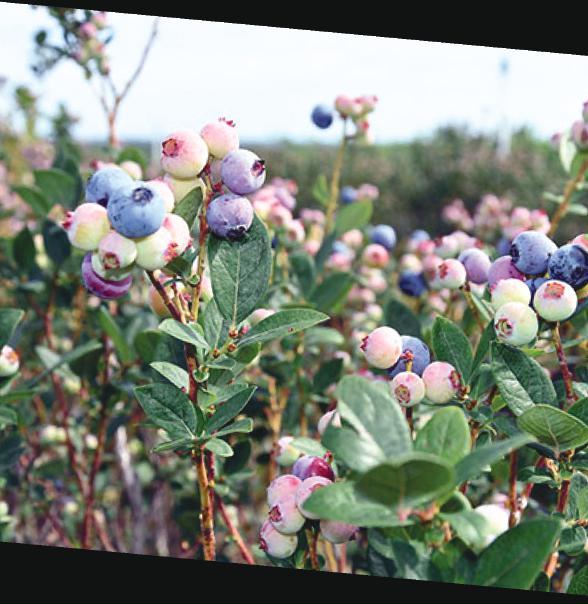
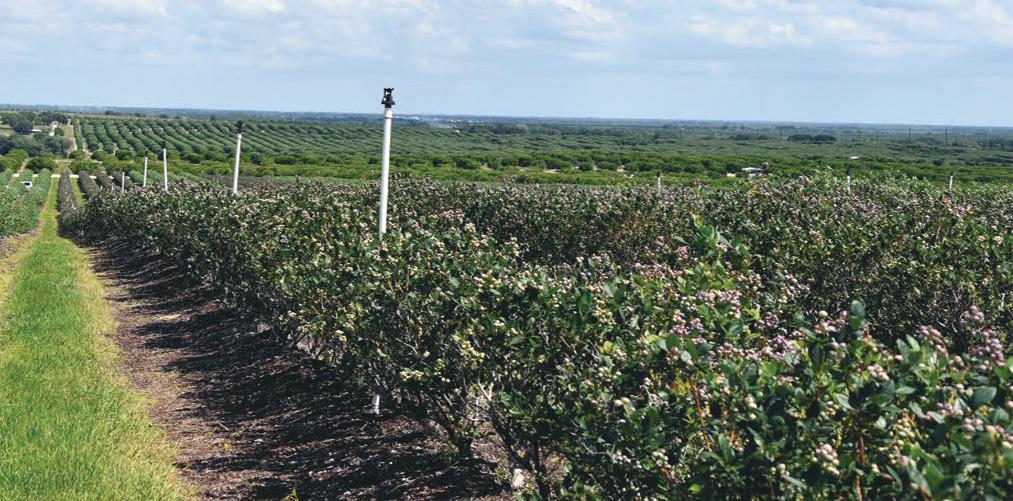
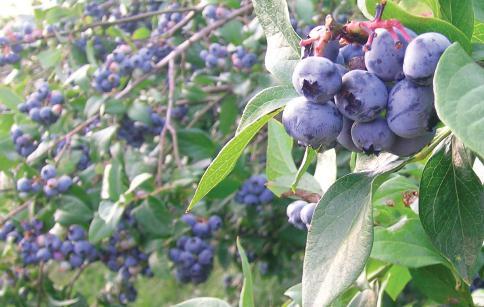


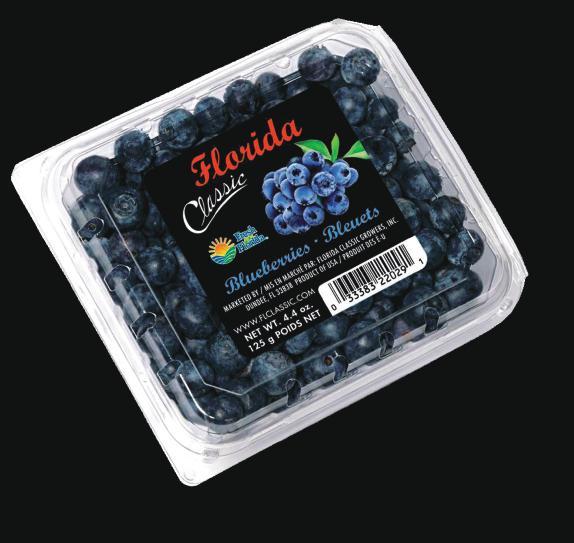
FloridaBlueberryGrowers.org Harvesting. Packing. Marketing. Our company is a wholly owned subsidiary of Dundee Citrus Growers Association which has been in business since 1924. We are a vertically integrated company that offers harvesting, packing and marketing services. Our “Florida Classic” brand is a well-recognized and respected label throughout the United States and Canada. Our packing facility is conveniently located one mile East of Highway 27 in Dundee. steven.callaham@dun-d.com | 863.287.2636 111 1st Street North, Dundee, FL 33838-1739 863.439.1574 office | 863.439.1535 fax DUNDEE BERRY GROWERS ASSOCIATION Currently Accepting New Growers.
topic of the season
continued from page 16
TABLE 7. MANAGEMENT STRATEGIES FOR PEST AND DISEASE PROBLEMS POSTHARVEST PLANT MANAGEMENT, CONTINUED
Horticultural oil (JMS StyletOil®)
3–6 qt./100 gal. ++ 4 h 0 days
Blueberry bud mite cannot be readily seen, and by the time symptoms are observed in the spring, the mites are too deep for effective treatment.
Blueberry bud mite


Horticultural oil (Stoller Golden Pest Spray Oil)
2 gal. (low volume) application or 2 gal./100 gal. (dilute spray)
++ 4 h 0 days
Yellownecked caterpillars Malathion (Malathion 57 EC) 1.5 pt. +++ 12 h 1 day Foliage-feeding caterpillars become more difficult to control as they mature.
Bacillus thuringiensis [BT] (DiPel® DF)
0.5–1.0 lb. ++ 4 h 0 days DiPel® is an effective microbial insecticide. However, it should be applied to small, early-stage caterpillars.
Azalea caterpillar
Tebufenozide (Confirm® 2F)
Esfenvalerate (Asana® 0.66 EC)
Esfenvalerate (Adjourn® 0.66 EC)
Diazinon (Diazinon AG500)
Pyriproxyfen (Esteem® Ant Bait)
4–8 fl. oz. ++++ 4 h 14 days Confirm® is very effective if applied to small, early-stage caterpillars.
4.8–16 oz. ++++ 12 h 14 days
4.8–9.6 fl. oz. ++++ 12 h 14 days
Esfenvalerate should be used as a salvage treatment for large caterpillars. It is very effective, but if used often it encourages scale and mite buildup.
Some users may be allergic to Adjourn®; discontinue use if skin or eyes become inflamed.
1 pt./100 gal. ++++ 24 h 7 days Mound drench. Slowly apply 1 gal. of diluted mixture over and 6 inches around each mound. Apply gently to avoid disturbing ants.
1.5–2.0 lb. (2–4 tbsp./ mound) ++++ 12 h 24 h
Esteem® Ant Bait should be applied during the spring and, if needed, again in the fall. Apply on sunny days when the
Imported
fire ants
Methoprene (Extinguish® Professional Fire Ant Bait 0.5%)
1–1.5 lb. (3–5 tbsp./ 1000 sq. ft.) (3–5 tbsp./ mound)
+++ 4 h 0 days
soil temperature is at least 60°F and the soil is moist. Baits are slow acting but effective. Allow 4 weeks to work. Do not make other imported fire ant treatments for 7–10 days. May need to reapply if heavy, flooding rains occur within 7 days.
Extinguish® Professional Fire Ant Bait (0.5% methoprene) is legal for use on crop land. Caution: Extinguish baits with methoprene plus hydramethylnon are not labeled for use on crop land. Application during the heat of the day or when rain is expected within 6 hours of application will reduce the effectiveness of this product. In areas of heavy infestation, repeat applications may be necessary 10–12 weeks after the initial application.
continued on page 26
18 | The Blueberry News FloridaBlueberryGrowers.org
Pest/ Problem Management Options Amount of Formulation per Acre Effectiveness (Least = + to most = +++++) REI (restricted entry interval) PHI (postharvest interval) Comments
CS 2005 CS 2005
Our copper sulfate pentahydrate in-solution formula is Our copper sulfate pentahydrate in-solution formula is OMRI-listed OMRI-listed with systemic capabilities and has proven with systemic capabilities and has proven results combating disease in copper-resistant strains! results combating disease in copper-resistant strains! It’s environmentally friendly by using less than an 1/8 lb It’s environmentally friendly by using less than an 1/8 lb to 1/4 lb per acre of metallic copper specifically to 1/4 lb per acre of metallic copper specifically designed to combat agricultural disease for a variety of designed to combat agricultural disease for a variety of specialty fruits, vegetables, citrus and tree nuts! specialty fruits, vegetables, citrus and tree nuts!

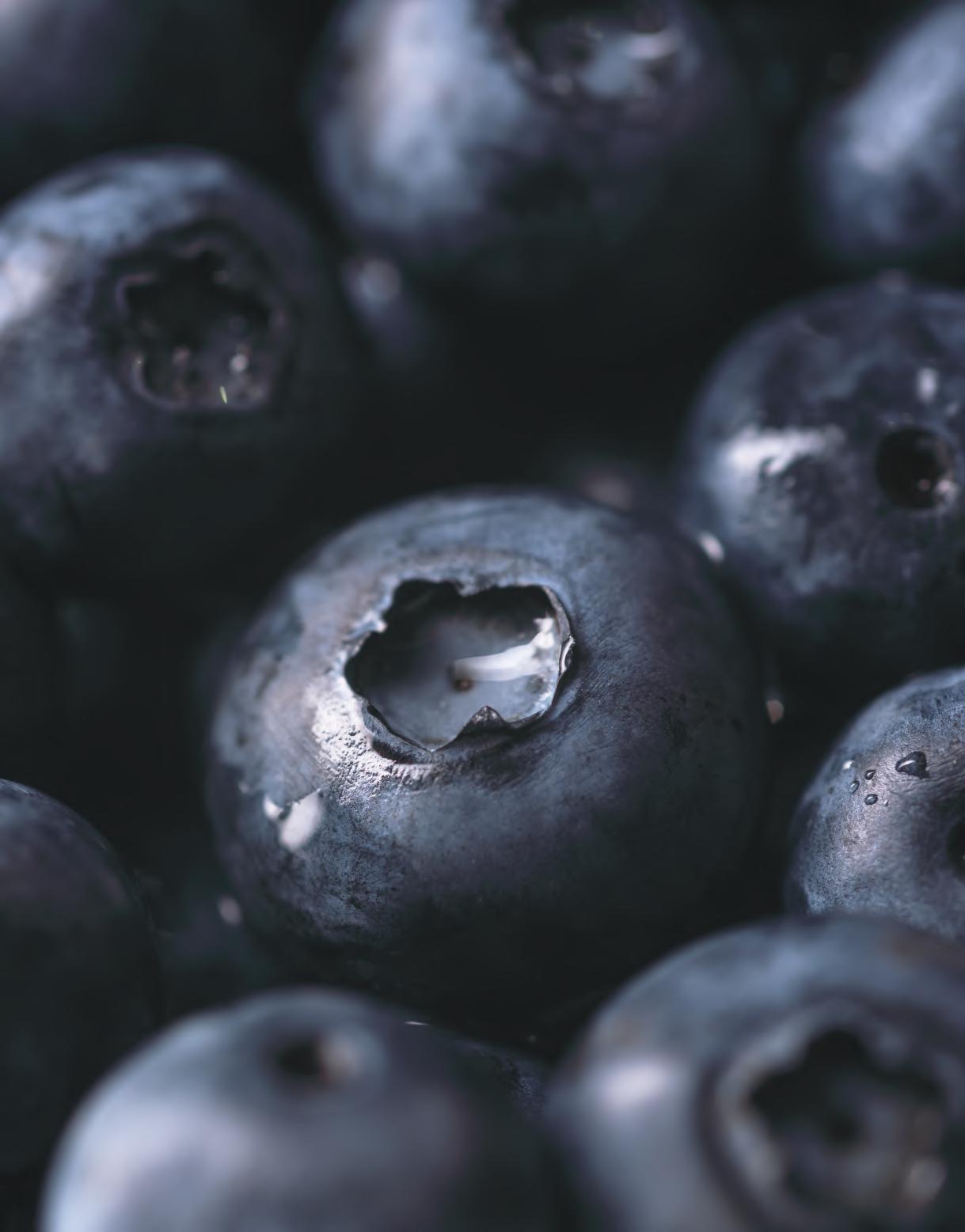
Combat Algal Stem Blotch, Combat Algal Stem Blotch, Anthracnose, Bacterial Canker, Anthracnose, Bacterial Canker, Twig Blight and Fruit Rot! Twig Blight and Fruit Rot! www.MagnaBon.com (800) 845-1357
NELSON KIRKLAND, Publisher nelson@ centralfloridamediagroup.com
The Hustle and Bustle of Harvest Season
‘TIS THE SEASON! No, not that season. This is our season — harvest season! It’s a busy season that is not without its challenges, but it’s also a time when Florida blueberry growers are in their element and make the most of the work they’ve put in all year.
The Florida Blueberry Growers Association is instrumental in setting an optimistic tone for us all. The advocacy and leadership it offers growers year-round are invaluable. Even with the challenges of late and little to no face-to-face events, nothing gets in the way of the research and education the association helps to provide. The virtual Spring 2021 Field Day on March 8 is the most recent example. Here are some key takeaways from the Field Day.
• Doug Phillips, UF Blueberry Extension coordinator, presented a walkthrough of the UF/IFAS Blueberry Growers Guide App, explaining various ways to access the content on the Scouting Guide. Descriptions of diseases and pests are all available at your fingertips. Phillips said there are more modules planned for cultivars and a management calendar.
• Dr. Maria Zamora described the research she is doing on evapotranspiration to develop an irrigation app.
• FBGA Board member Kyle Straughn of Straughn Farms shared tips for obtaining and handling honeybee hives for blueberry pollination. His presentation covered bee basics, the honeybee life cycle, hardware and industry jargon, what makes a good hive, what good and bad pollination look like and getting the best bees for your buck.
• Dr. Patricio Muñoz offered an update from the University of Florida’s breeding program, briefly discussing market trends and delving into the increased consumption of blueberries through 2020.
• Dr. Lorena Lopez, a postdoctoral assistant in Oscar Liburd’s lab, spoke on the efficacy of newly registered miticides against pest mites.
• Dr. Phil Harmon gave a plant pathology update, discussing the importance of UF’s Plant Diagnostic Center. Since diseases are not always obvious, the clinic can help with diagnosis and management recommendations. The lab is available to all growers in Florida.
• Dr. Jeff Williamson gave an update on two projects at the Plant Science Research & Education Unit, discussing a nitrogen fertilization rate study with Emerald and Farthing and an update on the sparkleberry grafting project.
You can see the presentations at FloridaBlueberryGrowers.org Take care, folks, and I wish you a prosperous and bountiful harvest!
Determined, Not Defeated
Florida Blueberry Growers Regroup After Disappointing Trade Ruling
by JULIE BUTTERFIELD TERESA SCHIFFER contributed to this report
UNITED STATES BLUEBERRY GROWERS swallowed a bitter pill this winter after their plea with the U.S. International Trade Commission to stem the tide of imported blueberries.
Countries like Mexico, Peru, and Chile are overwhelming the U.S. market with their product, putting the squeeze on domestic growers who must yield to higher quality standards, pay more for labor, and undergo annual third-party audits.
After hearings and testimony, the USITC told blueberry growers in February, in a unanimous vote, that imports weren't injurious to their production. It says that fresh, chilled, or frozen blueberries don’t arrive from other countries in quantities that could harm or threaten to harm the domestic industry.
“I was disappointed,” says Ryan Atwood, who runs Atwood Family Farms, one of three growers for H&A Farms. “I was hoping that there’d be some remedy to give us some transition time to deal with the influx of the foreign fruit that’s come upon us.”
“(The ruling) was a real problem for us,” says John Walt Boatright, Director of National Affairs at Florida Farm Bureau Federation. “It has implications for all of Florida’s agriculture, based on that determination. We’re still trying to determine the effects of that.”
In the period from 2009 to 2019, U.S. blueberry growers saw imports from Mexico increase by 2,111%, according to Brittany Lee, Executive Director of Florida Blueberry Growers Association.
Lee also serves as treasurer on the Executive Committee with the U.S. Highbush Blueberry Council and is the Vice President and Farm Manager of Florida Blue Farms.

Blueberries boast a heightened status since they've been deemed a superfood. The pigments in the skin are rich in the antioxidant anthocyanin. As such, blueberries are shown to decrease antioxidant levels in the body, according to the National Institutes of Health.
While blueberry consumption is at a peak, Florida and other blueberry-growing states continue to be hamstrung by the cost of
20 | The Blueberry News FloridaBlueberryGrowers.org
business
interlude publisher, s
labor, compared to other countries, like Mexico.

“It’s hard to compete with them because their cost of labor is one-tenth of ours,” Atwood says. “Half of your budget is labor, so it’s pretty difficult.”
Florida’s south and central farms ramp up production in March. The state will be in full production starting at the end of March through mid-May.
That’s when Mexico floods the market with its product, too.
“They bring a lot of fruit in our window,” Atwood says.
While imports from several countries like Chile and Peru play a role in undermining Florida’s blueberry production, Mexico “by far” creates the vast majority of import pressures, Lee says.
American blueberry pickers can fetch $11 per hour while the grower pays for overhead like the cost for processing visas, transporting workers, and paying for workers’ housing.
The cost of labor in Mexico is $10 or less per day for a blueberry farmer, Lee says. “All of those things add up, and it’s impossible to compete with $10-a-day labor.”
Because of the squeeze, there’s an emphasis on pivoting toward mechanization and reinvesting in new blueberry varieties.
Harvest machines can cost anywhere from $160,000 to $250,000 apiece. The large capital investment serves to offset the labor cost by reducing the cost per pound to pick the berries.
Atwood says he is working on finding solutions. He gave his own harvesters to a business partner who owns a mechanical harvesting company. He now contracts with the company to pick blueberries on his farm.
“I don’t have to find more employees during my busiest part of the year,” he says.
Atwood is a first-generation farmer and serves on the Industry Relations Committee with the U.S. Highbush Blueberry Council. His farm grows two southern highbush varieties, Emerald and Flicker. Emeralds are known for being large with high yields. Flickers are considered “evergreen” and vigorous growers.
Florida growers also have a higher threshold for ethical standards, such as being responsibly and sustainably sourced. They place a higher standard on food safety and must undergo a third-party audit during picking seasons.
Being more competitive means economizing, blueberry growers are acknowledging.
Economizing could mean growing more efficiently with the labor used for picking
the blueberries or it could mean using more machines to harvest. It also may mean experimenting with other plant varieties that are crispier and higher-yielding.
“Every grower needs to figure out their operation and figure out where they can get lean to compete,” Lee says.
Which is how Atwood sees it. In agriculture, tenacity is a required trait.
“Sometimes you persevere through, and, hopefully, things will turn out,” Atwood says. “You have to be an optimist to be a farmer.”
While growers are learning new techniques, exploring new blueberry varieties, and pushing the envelope on methods of efficiency, Lee stresses the battle is not over.
The American Blueberry Growers Alliance and Florida Blueberry Growers Association are continuing the momentum.
The industry will continue to seek approaches to mitigate the damage caused by the imports during Florida’s spring harvest, says FBGA President Leonard Park. “Though our growers are super busy now with harvest, the planning process is underway, which we hope will focus our efforts to improve our industry's competitiveness. Our ace in the hole is still the fact that blueberries grown in Florida truly are much fresher.”
FloridaBlueberryGrowers.org The Blueberry News | 21
Fight the Mighty Mites
Tips on Controlling Southern Red Mite and False Spider Mite in Blueberries

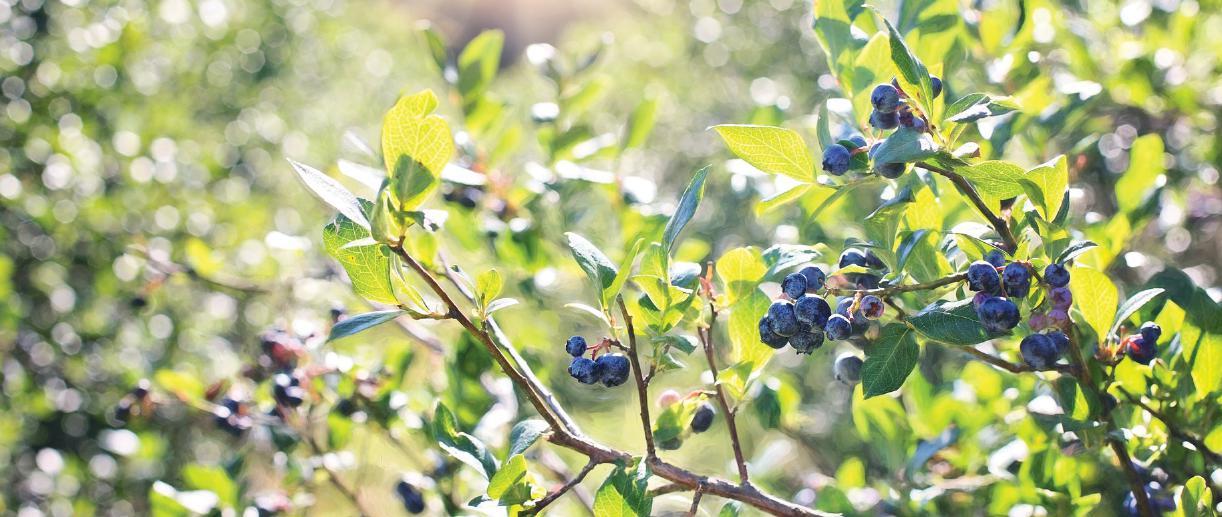
MITE DAMAGE CAN BE SIGNIFICANT on blueberries, and high infestations can result in defoliation. The southern red mite (Oligonychus ilicis) is the primary pest in both open-field and protected (e.g., greenhouse or high tunnel) production on southern highbush blueberry (SHB) in Florida. The false spider mite, or flat mite (Brevipalpus yothersi Baker), was first reported on SHB in 2016, and is more typically seen during the summer.

Description and Life Cycle
Southern red mite (SRM) populations develop and expand during cooler drier months, typically October to March when temperatures are between 60 – 86°F. In north-central Florida populations peak during the fall, whereas in the southern parts of the state peaks are observed in January and February. Under ideal conditions, (80°F, 65% relative humidity) life cycles can be completed within two weeks, and with overlapping generations, populations can double within five days. This increases the possibility of significant yield impacts. Adults can appear similar to the red form of twospotted spider mites (Tetranychus urticae Koch) and other red tetranychids. Southern red mites are red or brown to deep purple in color with lighter colored legs and are about 0.4 mm (0.016 in) in length. Females have a more rounded body shape than males and are slightly larger. Eggs are red to brown and spherical and hatch into pale six-legged larvae. Mites develop eight legs and darker coloration in the nymph stages (Fig. 1).
Flat mites typically complete their life cycle in about 19 – 20 days when temperatures are around 77°F with 60% relative humidity. Adult females are approximately 0.3 mm (0.012 in) in length, flat and oval, with red-orange coloring (Fig. 2). Males and immature stages are smaller but similar in appearance and color to females. Eggs are bright red to orange with an elongated shape.
continued on page 32
22 | The Blueberry News FloridaBlueberryGrowers.org
for the crop
Figure 1. Southern red mite adult female and male mating, and one egg (right). Credits: L. Buss
Figure 2. Female adult flat mite. Credits: R. Akyazi


FloridaBlueberryGrowers.org 23
Farmers Optimistic About Crop, Rebound in U-pick Operations
AS WE ENTER THE HARVESTING SEASON for Florida’s blueberry growers, many farmers are breathing a sigh of relief that this year is looking better than last. With COVID-19 hitting Florida in March of 2020, farmers, like so many others, found themselves thrown into a state of uncertainty and chaos. Mandatory shutdowns caused demand for most of Florida’s crops to plummet, as schools, restaurants, and resorts were forced to temporarily close.
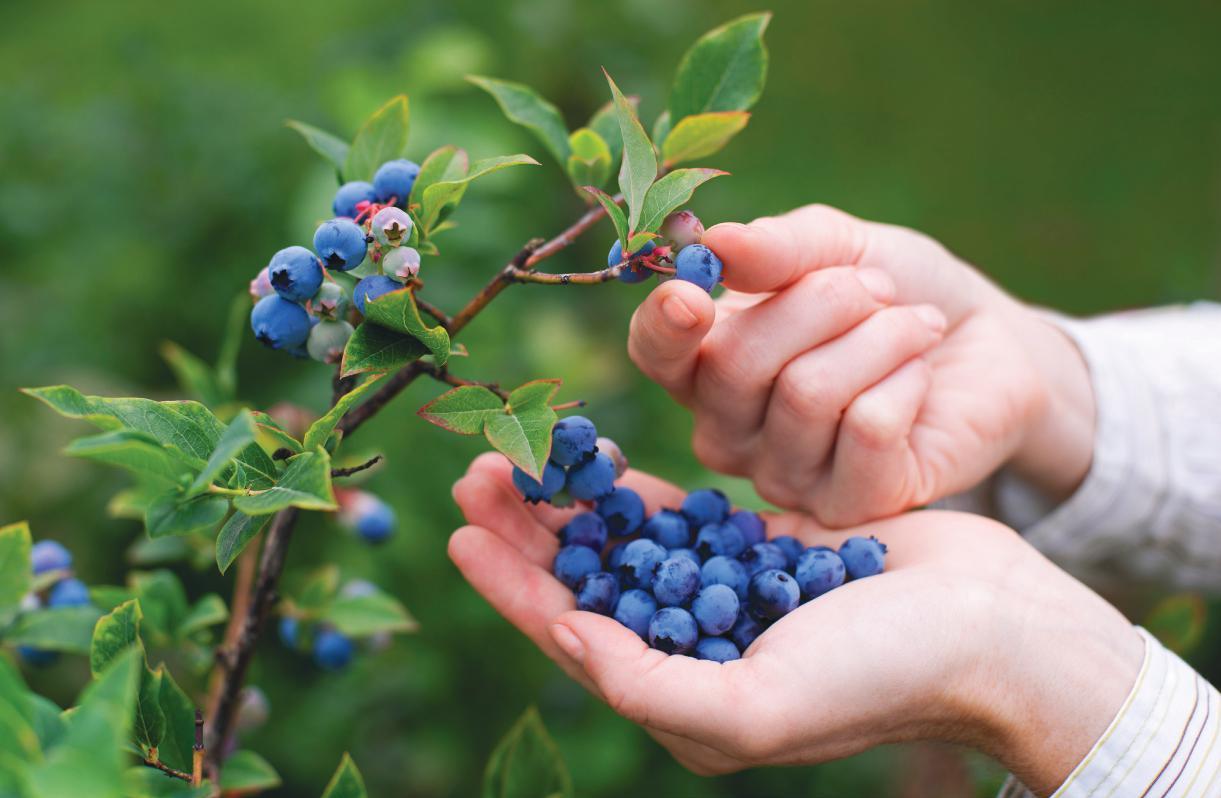
As commerce came to a screeching halt for a couple of weeks, there wasn’t much that growers could do to neutralize the disaster. Grocery stores didn’t have the staff available to unload trucks, so products would sit waiting for days until they could be attended to. Although farmers are considered essential workers, new labor protocols had to be quickly developed and implemented to protect workers. Fortunately, the United States federal government enacted the Paycheck Protection Program (PPP) to provide quick relief to certain types of businesses, including farms.
“When they came out with that PPP program,” blueberry grower Ryan Atwood recalls, “that really stabilized things. I’ll give the government credit for taking quick action on that. I think things would have had the potential to be really bad if we hadn’t gotten things back on track.”
One year later, the situation has dramatically improved. Yes, COVID-19 is still a threat, but we’ve learned more about it and how to protect ourselves and each other from the disease. While most public establishments are still operating at reduced capacities and with certain restrictions in place, much of Florida is again open for business. That is good news for farmers, who can be confident that their products will not be going to waste this year.
So how is the season looking for blueberry growers? Pretty good, actually! A robust crop of berries is just now coming ready to harvest, giving Florida farmers a reason to be optimistic. All in all, the weather has been kind to the blueberry bushes this season. It’s been a little overcast here and there, but the berries have gotten the chill hours they need, and there has been no crop loss reported due to severe freezes or other damaging weather.
continued on page 30
24 | The Blueberry News FloridaBlueberryGrowers.org
growers' thoughts
John Deere 5075GN
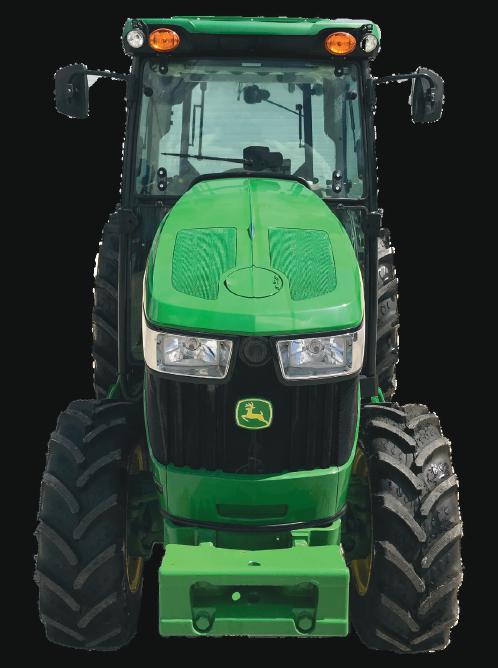

Ultra-narrow Specialty Tractor
The 5075GN is built to operate in Blueberry Farms, with a minimum working width of 49.5” from outside to outside.
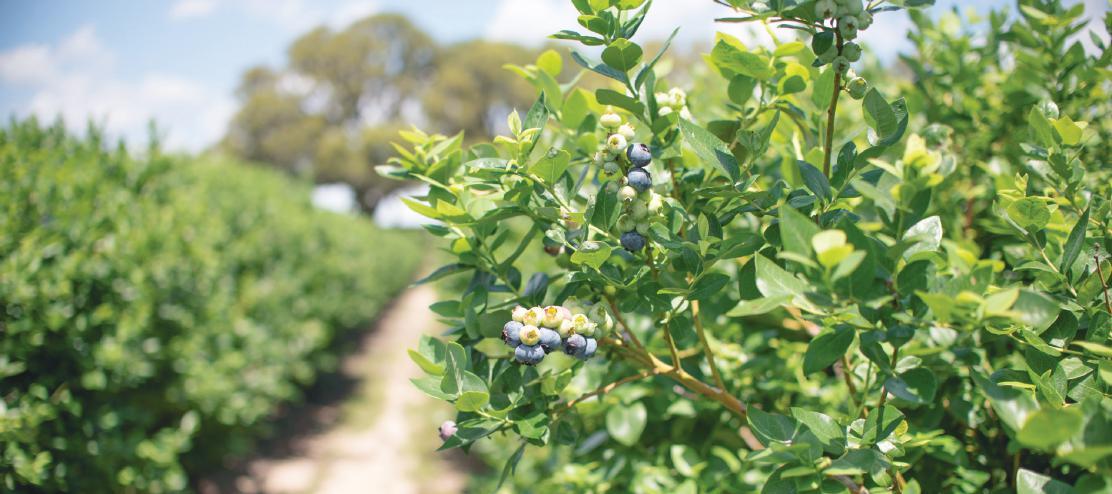
The 5075GN has 500-hour engine and 1250-hour transmission service intervals. Adequate service intervals allow more productive time working in the field with reduced hourly costs and reduced maintenance costs over the life of your machine.

FloridaBlueberryGrowers.org The Blueberry News | 25
For more information, please visit: EFE 1963.COM
topic of the season
continued from page 18
TABLE 7. MANAGEMENT STRATEGIES FOR PEST AND DISEASE PROBLEMS POSTHARVEST PLANT MANAGEMENT, CONTINUED
is also effective against small to medium-sized caterpillars.
is also effective against small to medium-sized caterpillars.
a minimum spray volume of 20 gal. by ground.
not make more than four applications per season.
6 oz. +++ 4 h 3 days Delegate® WG may be applied as needed. Delegate® WG should be applied in the early morning. It is toxic to bees in the surrounding areas for the first 3 hours after application.
Assail® 70WP 2.4 oz. +++ 12 h 1 day Do not make more than four applications per season. Toxic to bees until spray is dry (approximately 3 hours).
application. Chemigation into root zone through lowpressure drip, trickle, or microsprinkler. It is important to moisten the soil (1/2–1 inch of water) prior to application or shortly after application. Chilli
Malathion (Malathion 57 EC) 2 pt. +++ 12 h 1 day Malathion should be applied in the early morning or late evening to reduce the disruption of beneficial insects.



Entrust® 80% (labeled for organic use) 1.25–2 oz. +++ 4 h 3 days It is toxic to bees in the surrounding areas for the first 3 hours after application.
Flupyradifurone (Sivanto® 2–4 fl oz/acre +++ 4 h 3 days Sivanto®You should allow a minimum of 7 days between applications.
Tolfenpyrad (Apta® 27 fl oz/acre +++ 12 h 3 days Allow 14 days between applications
26 | The Blueberry News FloridaBlueberryGrowers.org
Pest/ Problem Management Options Amount of Formulation per Acre Effectiveness (Least = + to most = +++++) REI (restricted entry interval) PHI (postharvest interval) Comments
beetles Carbaryl (Sevin® 80S) 1–2 lb. +++ 12 h 7 days Sevin®
Diazinon
AG500) 1 pt./100 gal. ++++ 5 days 7
Mustang Max™ 4 oz. ++++ 12 h 24h Use
Assail® 70WP 2.4 oz. +++ 12 h 1 day
White grubs (Grubs
Admire® Pro 10 fl. oz. +++ 12 h 3 days
Delegate® WG
Flea
(Diazinon
days Diazinon
Do
of Asiatic garden beetle, European and masked chafer, and Oriental beetle)
Soil
thrips


FloridaBlueberryGrowers.org The Blueberry News | 27 When one cold night can ruin an entire year’s hard work... It’s best to play it safe. Since 1967, we have hand-crafted our wind machines with precision technology. We take pride in the details, which is why blueberry growers from around the world trust Orchard-Rite® wind machines to protect their mature stock and new plantings from the dangers of frost. We are dedicated to serving you and your crops by providing the tools, knowledge and service to stave off those frosty nights, protecting your harvest and your future. Superior Wind Machine Sales & Service 616-971-8177 orchard-rite.com Authorized Distributor of Orchard-Rite® Wind Machines SUPERIOR WIND MACHINE SERVICE, INC. Over 35,000 SOLD Worldwide!
Keep Target Spot In Your Sights
TARGET SPOT IS A FUNGAL LEAF DISEASE caused by Corynespora cassiicola, and was first reported in blueberry in the US in 2014 (on the cultivar "Jewel" in central Florida). Florida growers have reported severe defoliation from target spot on many southern highbush blueberry (SHB) cultivars since then.


Symptoms
Typical target spot symptoms are angular or irregular reddish-brown lesions, with a diameter of around 1/3- to 3/8-inch. The lesions can form concentric rings of varying colors as they expand, forming a target or bull’seye type pattern (Figures 1 and 2). Symptoms can be similar in appearance to early symptoms of anthracnose leaf spot, and both diseases can occur simultaneously on susceptible varieties. However, anthracnose leaf lesions can increase to a diameter exceeding 1/2 inch, while target spot lesions tend to remain smaller. Also, defoliation can occur with fewer target spot lesions compared to anthracnose.
Disease Cycle
Limited data currently exists on the disease cycle of this fungus in blueberry. In other crops, C. cassiicola typically overwinters in plant debris or alternative host species. Favorable conditions for rapid disease development and pathogen reproduction include humid weather, temperatures between 79°F – 84°F, and moderate rainfall. In the field, spores can be spread by wind or water splash, including both rain and overhead irrigation.
Management
Growers have reported that once symptoms have been observed, target spot is difficult to manage. Protective fungicide applications where the disease is known to occur or frequent and careful scouting for initial disease symptoms are recommended. Good cultural practices, including limiting leaf wetness duration and high humidity within the plant canopy may also help reduce disease severity. This can be accomplished by minimizing the
28 | The Blueberry News FloridaBlueberryGrowers.org
seasonal challenges
Figure 1. Target spot symptoms on blueberry leaves. Credits: P. Harmon
Figure 2. Target spot symptoms on blueberry leaf. Credits: D. Phillips
use of overhead irrigation, regular pruning to open plant canopies, and weed management in beds and row middles to increase airflow to the plant.
Many of the fungicides used to manage other summer leaf spot diseases of blueberry also will control target spot if applied before disease becomes severe. Evergreen producers who already have a fungicide rotation program for post-harvest foliage disease management may find that target spot is problematic late season. The disease can flare between scheduled applications in summer as well. Where target spot has been problematic, tighten fungicide application intervals (i.e. reapply every 2 weeks vs 4) and consider additional late-season sprays while the disease is still active in September. There is no known fungicide resistance for the target spot pathogen on blueberry at this time, and most fungicides that are used to manage anthracnose and rust have efficacy against target spot. Good spray coverage with fungicides is essential. Where good canopy penetration and coverage is not achieved, leaves within the bush can become infected and produce large amounts of spores (inoculum) to infect the rest of the bush at the first lapse of fungicide coverage during favorable conditions.
Specific products to rotate postharvest for target spot and other foliar fungal diseases include chlorothalonil (Bravo and others). Coppercontaining products applied in summer for algal stem blotch control also have some efficacy. Rotating between the copper and Bravo applications starting when regular summer rains begin (late May, June) makes for a good backbone to a fungicide application program. Supplement these applications by adding additional sprays and/or tank-mixing the Bravo with another fungicide when target spot symptoms are noted between applications. An extra application early in an epidemic will pay dividends later in the summer, and those left until symptoms are common throughout the field are not likely to give satisfactory results, requiring more fungicide apps and higher label rates to get the disease back in check.
Additional fungicide products to consider include azoxystrobin (Abound and others). Resistance can be an issue for Abound with anthracnose, so consider using this as a tank mix, either with Bravo or with Captan. Pristine has as one active ingredient, pyraclostrobin, which is in the same group as Abound, but Pristine is generally recommended as a rotation partner with Switch preharvest.
Recent registrations of fungicides within another group of fungicides include products with SDHI (FRAC group 9) active ingredients. These are used for target spot control in other crops like tomato and will be the subject of blueberry trial work in the near future. Two products to consider incorporating into your rotation from this group include Fontelis and Luna Tranquility. A third product is now available called Miravis Prime; however, it contains one of the active ingredients from Switch and when choosing between Switch preharvest or Miravis Prime postharvest, go with Switch and use Fontelis or Luna Tranquility for leaf disease control instead. Producers have to choose because making allowed applications of both would put them over the legal limit of the fludioxanil active ingredient for the season.
The final group to mention includes those products with DMI active ingredients (FRAC group 3). Proline (active ingredient prothioconazole) has stood out as a good rust management tool postharvest. Where rust and target spot occur together, consider including Proline in the rotation with those above. Quash, Indar, and propiconazole (Tilt and others) are alternatives to Proline in this group with generally less rust efficacy and largely unknown target spot efficacy.
continued on page 34
POWER THROUGH COMMERCIAL CUTS QUICKER & EASIER
LIM I TED
THE CLASSIC
The Classic is the ultimate mowing machine with the perfect combination of commercial quality with industrial features



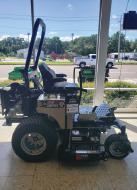

FINANCING AVAILABLE
HIGH PERFORMANCE PACKAGE: Comes standard on select models
OCDC: Open and close the discharge chute on command
PUMPS & WHEEL MOTORS: Stronger transmissions for extended
system life
HEAVY-DUTY SPINDLES & COOLING FANS: Keep spindles and belts cool 50”, 60”, AND 72” ELITE X DECK: Handles all grass types in any

situation 3440 US HWY 17 SOUTH • ZOLFO SPRINGS, FL 33890-0837 (863) 735-1122 3203 HAVENDALE BLVD • WINTER HAVEN, FL 33881 (863) 967-0602 17215 HWY 27 NORTH • MINNEOLA, FL 34715-9273 (352) 394-7181
FIELDSEQUIP.COM

FloridaBlueberryGrowers.org The Blueberry News | 29 DIXIE CHOPPER MOWERS
POWER AND MORE POWER: Powered by industry preferred Kawasaki® engines with options up to 35 horsepower to tackle through the tough jobs with ease
Ryan Atwood is a past president of the Florida Blueberry Growers Association. He owns H&A Farms and established Atwood Family Farms, a 23-acre blueberry farm just outside of Umatilla in Eustis, in 2014. Evergreen is the first variety of blueberries to be harvested by the Atwoods in March. It’s a relatively low-volume crop, but the real fun begins in late March, when the Emerald blueberries start to come in.
With the nice weather that blueberry farmers have been favored with, a healthy crop of berries is expected this year. That means that many Florida fields will be opening for U-pick in April and May. People love visiting Florida farms to pick their own favorite fruits, making agritourism a thriving industry in the state. Since everyone was urged to stay home at this time last year, farmers are hoping to see a considerable turnout for berry picking this spring.
Atwood recalls how the pandemic affected his farm’s agritourism in 2020. “It hit right at the peak of our production. That was a big problem last year. We didn’t open our U-pick last year. We did a drive-through deal. We were very concerned about liability. I think this year we feel a lot more comfortable. We kind of understand what to do. From a commercial side, I don’t see it having any negative effect on our harvest season this year.”
Historically, Atwood Family Farms has hosted a fairly simple U-pick operation, charging visitors per pound for the berries they picked, and offering some locally produced jams and jellies for sale. This year, Atwood describes how they are creating a more festive destination for their customers to enjoy by inviting musicians and food trucks to entertain the public. They will be opening their U-pick the first weekend of April.
Throughout Florida, farms will be welcoming the public to enjoy harvesting their own blueberries to take home and enjoy with their family and friends. In Clermont, for example, Southern Hill Farms will soon be offering eight different varieties of plump, delicious blueberries for customers to pluck throughout the rest of the season. They’ll even have food trucks available every weekend for visitors who have worked up an appetite in the fields.
Even though the outlook is generally positive this year for Florida’s blueberry growers, there is still one issue that is giving them cause for concern: the market for blueberries, and many other crops, is being inundated with fruit produced in other countries. Traditionally, Florida would kick off the blueberry season domestically, followed by Georgia, and then North Carolina, New Jersey, and Michigan in succession. In the off-season, foreign producers would provide fruit for the American markets. Recently, however, other countries — especially Mexico — have begun offering their harvests while

domestically-produced berries are still in the stores, negatively impacting local growers. This makes it imperative that consumers know – and care – where their food is grown.
“I want people to know where their produce is coming from,” Atwood implores. “Florida, particularly, suffers from Mexican fruit coming into our markets during our production periods, so our prices continue to get depressed because of this flood of Mexican fruit that keeps coming in. That’s something that I really want everyone to be aware of.”
You can support Florida farmers by encouraging your friends and associates to check the label before they buy to see where their food is produced. A sustainable future of domestic food security begins with the purchasing habits we practice now.
30 | The Blueberry News FloridaBlueberryGrowers.org
growers' thoughts, continued from page 24
CREDIT by TERESA SCHIFFER
MEMBERSHIP INFORMATION
To join or renew your membership in the Florida Blueberry Growers Association, mail a check payable to: FLORIDA BLUEBERRY GROWERS ASSOCIATION, INC. P.O. Box 358086 Gainesville, FL 32635

•Grower Member: $150 (Florida & out-of-state growers)
Additional Associate Member/Grower: $50 each
•Allied Member: $200 (equipment and chemical companies, etc.)














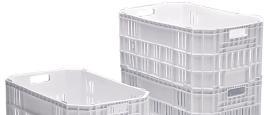


Additional Associate Member/Allied: $50 each
•Educational & Research Member: $10 (University and USDA members who do not grow blueberries commercially)



FloridaBlueberryGrowers.org The Blueberry News | 31 Plastic Rentals, Logistic & Management Solutions ■ Daily Bin Rental On-Demand — No Minimum Quantity or Timeframe ■ Citrus Bins, Blueberry Lugs, Peach Tote Rentals ■ Bin Repairs ■ Recycle Program ■ IGPS Pallets Jerry Cummings 863-651-5596 jcummings@palogix.com www.palogix.com CONNECT WITH US • Content Marketing • Niche Publishing • Social Media Management • Content-Focused Website Development • Targeted Marketing • Articles, Whitepapers, E-Books, Reference Guides, Workbooks, and more. centralfloridamediagroup.com (863) 248-7537 info@centralfloridamediagroup.com
“We are an agricultural services advertising company that helps your business attract clients.”
– Nelson Kirkland, founder, Central Florida Media Group
Injury
Southern red mites spend most of their lives feeding and reproducing on the underside of SHB leaves. The mite inserts its mouthpart into the leaf and feeds on cell contents, resulting in a bronzing of the leaves, which intensifies as the level of injury increases (Fig. 3). This can cause a decrease in the rate of photosynthesis. A buildup of shed white skins is usually observed when there are high mite populations (Fig. 4). Alternatively, plants heavily infested with flat mites typically develop necrotic brown spots on the leaves (Fig. 5).


Monitoring and Management
There are differences between southern red mites and flat mites other than color and shape that must be considered when monitoring for the presence of mites. Southern red mites typically feed over the entire underside of leaves and construct webbing to cover the infested surface as a protection against predators. Flat mites usually feed only near the secondary veins and midrib on the leaf underside and do not create webbing. Also, southern red mites can be observed with the naked eye or a 10x hand lens and tend to move more quickly, while flat mites must be observed with at least a 20x hand lens or microscope, and tend to move more slowly.
Frequent scouting for mites is essential for the early identification of any infestations, before significant feeding injury occurs, especially during hot dry conditions when mite populations typically increase. Scouts can check for bronzed leaves for southern red mites and necrotic spots for flat mites. It is important to record both eggs and motile (all stages except egg) numbers. The egg stage gives information about future population. To scout for the presence of mites, examine the underside of leaves to look for adults, shed skins, and webbing. Alternatively, the person scouting can sharply tap the foliage onto a sheet of white paper to dislodge and observe any adults.
Mites prefer dry dusty conditions, and plants that are drought-stressed can be more susceptible to mite injury. Water should be regularly applied to roadways or other dusty areas when conditions are hot and dry, and plants should be supplied with sufficient irrigation to avoid becoming droughtstressed.
Three miticides have recently been registered for use in highbush blueberries:
• Magister® with the active ingredient fenazaquin
• Portal® with the active ingredient fenpyroximate
• Kanemite® with the active ingredient acequinocyl
These miticides target tetranychids. Magister® has recently added the southern red mite to its label. Kanemite® also has the southern red mite on its label. These miticides control all developmental stages of southern red mites (larvae, nymphs, and adults). Magister® also provides contact control

32 | The Blueberry News FloridaBlueberryGrowers.org
for the crop ,continued from page 22
Figure 3. Bronze-colored blueberry leaves associated with southern red mite feeding injury. Credits: D. Phillips
Figure 5. Necrotic brown spots on leaves due to feeding injury by false spider mites or flat mites. Credits: R. Akyazi
34
Figure 4. Southern red mite shed skins. Credits: D. Phillips
continued on page


FloridaBlueberryGrowers.org The Blueberry News | 33 KeyPlex P.O. Box 2515, Winter Park, FL 32790 Local/Int’l: +1-407-682-6500 Toll Free: 1-800-433-7017 Fax: +1-407-682-6504 E~Mail: keyplex@keyplex.com Visit KeyPlex.com for Crop KeyCards, Knowledge and Information W unloCK the SecretS of plant health & diSeaSe control Invest in your return today Micronutrients
for the crop,cont. from page 32
of eggs, in addition to controlling other stages by both contact and ingestion. Our most recent field trials were conducted in the fall of 2020, testing eight miticides. The data from this trial indicates that Magister® and Portal® were the most effective products of those included in the trial at suppressing southern red mite populations and allowing plants to recover from mite feeding injury. This is consistent with the results in our 2019 trials. Kanemite® also showed effectiveness at reducing southern red mites in the 2020 trial. Only one application per year can be made with Magister® and two applications per year with Portal® and Kanemite®.
In addition to these miticides, two sulfur-based products were tested in our 2020 field trials. Sulfur –CARB™ is a suspended sulfur soil amendment (with elemental sulfur and molasses), which is sometimes used by growers in foliar applications to repel mites and insects. Sulfur – CARB™ provided good control of mites only after a 2nd application (14 days apart), and by the end of the trial there were lower levels of leaf bronzing. However, this product is not specifically labeled for southern red mites in SHB. The other sulfurbased product, Cosavet DF® with the active ingredient sulfur, was not effective at reducing southern red mite populations. Since flat mites have only recently been reported as a pest on blueberries, there are no established management and control guidelines or information on miticide effectiveness for this pest. Flat mites are a pest of citrus, and any management techniques at this point are from studies in that crop.
Predatory mites have been an important tool that is used for controlling mites in some crops, however, at this point, they have not been successfully evaluated in blueberry systems.
Scouting for the early identification of mites and implementing management techniques before populations become high are recommended to avoid significant feeding injury and associated yield impacts.
For more information see UF/


IFAS EDIS Publication ENY-1006, Mite Pests of Southern Highbush Blueberry in Florida (edis.ifas.ufl. edu/in1284).



seasonal challenges, cont. from page 29
Growers have many fungicide tools with which to address target spot, but each additional application adds production costs, including labor, fuel, equipment maintenance, as well as the cost of the product itself. With today’s market and other challenges, the question becomes can we afford to manage target spot? Additional research is needed to document the impacts of target spot defoliation on fruit production the following season, and the economic costs associated with these potential management options and benefits in terms of increased yields.
Sri Lankan Weevil on the Rise
The Sri Lankan weevil, Myllocerus undecimpustulatus undatus Marshall, is becoming more prevalent in southern highbush blueberries (see images). Growers should be on the lookout for this and monitor its presence with in-situ counts (recording the number of weevils if you find them on your farm).

They have a wide host range and are attacking several fruit crops, including blueberries. They were first detected in Florida in 2000 and have spread to many counties throughout the state. The adults feed on leaves causing notching.
Broad-spectrum organophosphates pesticides such as Malathion and Diazinon should be able to reduce the population. Also, softer Carbamate pesticides such as Sevin could potentially reduce the population as well. More information on Sri Lankan weevil can be found at edis.ifas.ufl.edu/pdffiles/IN/IN101600. pdf.
34 | The Blueberry News FloridaBlueberryGrowers.org
______ CREDIT by OSCAR LIBURD, Professor, Entomology and Nematology Department, UF/IFAS; LORENA LOPEZ, Postdoctoral Research Associate, Entomology and Nematology, UF/IFAS; & DOUG PHILLIPS, UF/IFAS Blueberry Extension Coordinator
CREDIT by PHIL HARMON, Professor, Plant Pathology Department, University of Florida & DOUG PHILLIPS, UF/IFAS Blueberry Extension Coordinator
______
CREDIT by OSCAR LIBURD, professor, Entomology and Nematology Department, UF
MY PAYROLL SOLUTIONS LLC has over 18 years of experience in matching small businesses, Agriculture Companies and harvesters to staffing services and employee leasing companies which provide payroll services with workers comp coverage for our clients and providing assistance with H2A applications. For more information contact Jeff H Futch at 863 835-1130
EQUIPMENT FOR RENT
FOR RENT
7 yard rowmulcher, Great for replenishing bark on Blueberry Farms, PTO drive, 30hp tractor needed. Call 863-604-2526 for rental details.
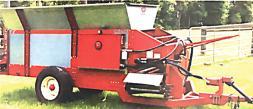
PRODUCTS & SERVICES
AGRI-SOURCE
Producer of Blueberry Pine Bark Products for the Blueberry Industry.
352-351-2700
AGRISTARTS
Producers of tissue culture 72ct liners and 21ct field-ready plants. Licensed for all UF selections + more! 407-889-8055
AIRTEC SPRAYERS
Over the Row Blueberry Sprayers
Lower Volumes, Less Drift, Better Coverage. 863-412-6247 AirtecSprayers.com
BIOBEST
Biobest bumblebees maximize pollination for a better fruit set.
1-855-224-6237
CARDEN & ASSOCIATES, INC.
863-291-3505. Here for the Florida Blueberry Grower… yesterday, today and tomorrow!

DUNDEE GROWERS ASSOCIATION
Harvesting, Packing & Marketing services since 1924.
(863) 439-1574 / Dun-D.com
EVERGLADES EQUIPMENT
12 locations in Florida with the Best Lease Program in the Business!
A John Deere Dealer ShopEFE.com
FARM CREDIT OF CENTRAL FL 866-824-5626 Patronage refunds for Smart Farmers and Country Home Owners. Lower costs!
FIELDS EQUIPMENT CO., a John Deere Authorized Dealer. 3 Locations. Small Dimensions, Big Performance. (863) 967-0602 / FieldsEquip.com
FLORIDA FOUNDATION SEED PRODUCERS, INC.

352-392-9446
Providing Superior Plant Varieties
IRRIGATION SERVICES OF CENTRAL FLORIDA
Ag irrigation is our specialty, Jimmy Durden, Irrigation Specialist 863-875-5524.

ISLAND GROVE
352-274-3835
Quality Plants. Superior Service. IslandGroveAgProducts.com
KEYPLEX
Unlock the secrets of plant health and disease control.
(407) 682-6500 / KeyPlex.com
MAGNA-BON
Combat algal stem blotch, anthracnose, bacterial canker, twig blight and fruit rot!
(800) 845-1357 / MagnaBon.com

ORCHARD-RITE
performance wind machines are pure and powerful (509) 834-2029 / Orchard-Rite.com
PALOGIX INTERNATIONAL
Plastic rentals, logistic & management solutions. Palogix.com

PERFORMANCE NUTRITION
Empower your soil with soil innoculants and protect against stress
(732) 888-8000 • pnfertilizers.com
PLANT FOOD SYSTEMS
Advanced Plant Nutrition and Protection. PlantFoodSystems.com
PONIS EPACK SYSTEMS
Specialist engineering in blueberry processing and packing. (786) 566-0342 sales@epacksystems.com
THUNDERBIRD PLASTICS
503-744-9112 Lots of colors! ThunderbirdPlastics.com
TWC DISTRIBUTERS INC. Freeze Protection Experts. We carry a full line of irrigation equipment for agriculture, nursery, and greenhouse growers. Ronnie Chandler (407)467-3559
FARMING INNOVATION LLC
Hedging and Topping of Blueberries, Peaches, and Olives. HunterVickers 863-287-2351 vickershunter@yahoo.com
FloridaBlueberryGrowers.org The Blueberry News | 35
or call (863)248-7537.
To
place a classified ad please e-mail info@centralfloridamediagroup.com
Call Central Florida Media Group to advertise or place a Classified ad. Call 863-248-7537 TODAY!
Essentials of Pruning
PRUNING IS AN ESSENTIAL PRACTICE for commercial blueberry production. Pruning can be used to minimize plant stress, shape plants for mechanical harvest or other operations, promote growth of new fruiting wood, balance reproductive and vegetative growth, reduce incidence of pests and diseases, control plant size, and promote new cane development.
Young Plants
With the traditional deciduous production system, flowers and fruit are usually removed from plants during their first year in the field to encourage plant establishment and rapid vegetative growth, which will increase future fruit production. Most fruit and flowers can be removed by cutting the plants back to about 60 to 75% of their original size. Weak twiggy growth often found at the base of the young plants can be removed at this time. Transplant stress is also minimized by temporarily reducing the canopy size and plant water requirements until the root system is established. Some growers in the evergreen system harvest plants one year after planting.
If machine harvesting is likely to occur in the future, training plants to have narrow
crowns should begin during the year of planting. Milk or juice cartons can be used to assist in the development of narrow crowns and can also protect young plants from herbicide spray drift (Figure 1). Narrow crowns as seen in Figure 2 will reduce ground losses during machine harvesting and increase machine harvesting efficiency compared to plants with wide crowns. After cartons are removed, continued selective pruning will be needed to maintain narrow crowns.
Mature Plants
The major pruning operation for mature blueberry fields in Florida occurs soon after fruit harvest is completed (late summer pruning may result in late fruit maturity the following season). This pruning operation, referred to as

postharvest or summer hedging and topping, is usually done mechanically because of high labor costs. Hand-held hedge clippers may be used on smaller farms but more often tractormounted hedgers or self-propelled, overthe-row, pruning equipment is used due to increased speed and efficiency (Figure 3).
Plants are typically topped at between 40 and 48 inches and the sides are trimmed to prevent encroachment into the row middles. Hedging and topping maintain plants at a manageable size, and help stimulate a strong summer flush which contains much of the fruiting wood for the next year’s crop. While most cultivars respond well to summer hedging and topping, it should be noted that “Chickadee” has responded with weak regrowth. For “Chickadee,” light tipping is preferred to standard hedging and topping.
The open wounds created by hedging and topping are potential infection sites for fungal pathogens such as Botryosphaeria (stem blight). Hedging and topping should be followed immediately by an application of a broad-spectrum fungicide spray such as Captan.
36 | The Blueberry News FloridaBlueberryGrowers.org
farm management
photo courtesy of UF/IFAS
Hedging and topping the Southern Highbush Blueberry can help minimize stress, shape plants, control size, and promote growth
In Florida, flower buds on summer flush wood initiate and develop during late summer and fall. Healthy fall foliage is needed for the conversion of vegetative buds to flower buds and for their continued development. Research has shown that early fall defoliation can inhibit flower bud initiation and subsequent flower bud development, as well as fruit yield the following spring. The summer flush should remain healthy with leaves attached at least through the first half of November (deciduous system) or throughout the winter (evergreen system).
Individual blueberry canes lose their vigor and productivity as they age. This problem can be addressed by using a procedure known as cane renewal pruning. In general, cane renewal pruning should begin about 4 to 5 years after planting. About ¼ of the oldest canes (usually one or two canes) are removed each year by cutting back to the crown, or to a strong lateral. Cane renewal pruning stimulates the growth and development of new canes which are more productive than older canes, thereby lengthening the productive life of blueberry plants. It also allows for better light penetration and air movement in the canopy. During this time, dead, weak, or low-growing shoots can also be removed. Cane renewal pruning is usually done during the dormant season, but can also be done along with summer hedging and topping.
For more information, see UF EDIS Publication HS1359, Pruning Southern Highbush Blueberry in Florida (https://edis. ifas.ufl.edu/pdffiles/HS/HS135900.pdf).





FloridaBlueberryGrowers.org The Blueberry News | 37
Figure 1. Cartons may be used to train young blueberry plants to narrow crowns for later machine harvesting.
Figure 2. These “Farthing” plants were trained to narrow crowns with cartons.
Figure 3. Mechanical postharvest hedging and topping
CREDIT by JEFF WILLIAMSON , Professor, Horticultural Sciences Department, UF, & DOUG PHILLIPS, UF/IFAS Blueberry Extension Coordinator
continued from page 15
Weeds
MAY, CONTINUED





Apply a pre-emergence herbicide after harvest (tank mix with a post-emergence herbicide if weeds are at densities that hinder bush growth). See UF EDIS Publication HS90, Weed Management in Blueberry (edis.ifas.ufl.edu/pdffiles/WG/WG01600.pdf).

After harvest is complete, hedge back bushes to stimulate new vegetative growth, immediately spraying with a recommended fungicide to minimize the risk of fungal pathogens infecting through pruning wounds. See UF EDIS Publication HS1359, Pruning Southern Highbush Blueberry in Florida (edis.ifas.ufl.edu/pdffiles/HS/HS135900.pdf).
JUNE
Disease Scout for algal stem blotch. See UF EDIS Publication PP344, Algal Stem Blotch in Southern Highbush Blueberry in Florida (edis.ifas.ufl.edu/ pdffiles/PP/PP34400. pdf).
Selectively prune out canes infected with algal stem blotch, Botryosphaeria stem blight, and dead canes. Monitor and manage leaf diseases. See UF EDIS Publication PP348, Florida Blueberry Leaf Disease Guide (edis.ifas.ufl.edu/ pdffiles/PP/PP34800.pdf).
Apply Ridomil to help prevent Phytophthora root rot. On farms managing bacterial wilt, begin monthly through-irrigation or banded bed applications of a phosphorous acid product. See UF EDIS Publication PP332, Bacterial Wilt of Southern Highbush Blueberry Caused by Ralstonia solanacearum (edis.ifas.ufl. edu/pdffiles/PP/PP33200.pdf).
Insect
Pests Scout for flea beetles, larval citrus root weevil (by pulling out dead or dying plants and examining the roots and surrounding soil/bark), larval flatheaded borer, chilli thrips, and southern red mites and apply recommended control measures if present. See UF EDIS
Publication ENY1006, Mite Pests of Southern Highbush Blueberry in Florida (edis.ifas.ufl. edu/pdffiles/IN/IN128400.pdf).


Leaf Tissue Samples
Leaves should be collected for tissue nutrient analysis. Select samples from fully expanded leaves in the middle of a recent summer growth flush.
38 | The Blueberry News FloridaBlueberryGrowers.org
Pruning
Florida Foundation Seed Producers, Inc.
Florida Foundation Seed Producers, Inc.
Florida Foundation Seed Producers, Inc. http://ffsp.net
Blueberry varieties developed by the University of Florida are patent protected under U.S. Code Title 35. Anyone propagating plants for their own use or for sale is required to be licensed by Florida Foundation Seed Producers, Inc. (FFSP). Additionally, packers, marketers, and sellers of fruit from the above varieties can be liable for selling fruit from illegally propagated plants. As of March 30, 2021 the above entities are the only entities licensed for legal propagation and sale of plants of the respective varieties. Protect yourself from
Blueberry varieties developed by the University of Florida are patent protected under U.S. Code Title 35. Anyone propagating plants for their own use or for sale is required to be licensed by Florida Foundation Seed Producers, Inc. (FFSP). Additionally, packers, marketers, and sellers of fruit from the above varieties can be liable for selling fruit from illegally propagated plants. As of March 30, 2021 the above entities are the only entities licensed for legal propagation and sale of plants of the respective varieties. Protect yourself from
Blueberry varieties developed by the University of Florida are patent protected under U.S. Code Title 35. Anyone propagating plants for their own use or for sale is required to be licensed by Florida Foundation Seed Producers, Inc. (FFSP). Additionally, packers, marketers, and sellers of fruit from the above varieties can be liable for selling fruit from illegally propagated plants. As of March 30, 2021 the above entities are the only entities licensed for legal propagation and sale of plants of the respective varieties. Protect yourself from
unknowingly purchasing illegal plants or fruit by asking entities if they are licensed to propagate and if fruit has come from legal plants. Illegal propagation is a direct threat to the blueberry industry and the patent rights held by FFSP. Royalties generated are critical to the support of the Florida blueberry breeding program. If you are interested in obtaining a license or would like to anonymously report illegal propagation, please contact: FFSP, PO Box 110200, Gainesville, FL 32611, Phone: 352273-3656.
unknowingly purchasing illegal plants or fruit by asking entities if they are licensed to propagate and if fruit has come from legal plants. Illegal propagation is a direct threat to the blueberry industry and the patent rights held by FFSP. Royalties generated are critical to the support of the Florida blueberry breeding program. If you are interested in obtaining a license or would like to anonymously report illegal propagation, please contact: FFSP, PO Box 110200, Gainesville, FL 32611, Phone: 352273-3656.
unknowingly purchasing illegal plants or fruit by asking entities if they are licensed to propagate and if fruit has come from legal plants. Illegal propagation is a direct threat to the blueberry industry and the patent rights held by FFSP. Royalties generated are critical to the support of the Florida blueberry breeding program. If you are interested in obtaining a license or would like to anonymously report illegal propagation, please contact: FFSP, PO Box 110200, Gainesville, FL 32611, Phone: 352273-3656.
FloridaBlueberryGrowers.org The Blueberry News | 39
the Question!
Are You Licensed?” Licensee Abundance (PP16476) Arcadia ™ FL 07399 ' ( PP 26313 ) Avanti ™ ' FL 06203 ( PP 26312 ) Bobolink ™ ' FL 03291 ' ( PP 21377 ) Chickadee ™ ' FL 04235 ' ( PP 21376 ) Colossus (PPAF) Endura ™ ' FL 06377 ( PP 26679 ) Farthing (PP19341) FL09-216 (PPAF) FL11-137 (PPAF) Flicker ™ ' FL 9643 ' ( PP 21554 ) Indigocrisp ™ ' FL 98325 ' ( PP 26523 ) Keecrisp ™ ' FL 06556 ' ( PP 27771 ) Kestrel ™ ' FL 0240 ' ( PP 21719 ) Magnus (PP32181)Meadowlark ™ ' FL 01173 ' ( PP 21553 ) Millennia (PP12816) Optimus (PP32028) Patrecia (PP27740)Primadonna (PP20181) Raven ™ ' FL 05627 ' ( PP 21374 ) Savory (PP15109)Scintilla (PP19233) Sentinel (PPAF)Snowchaser (PP19503) Southern Belle (PP13931) Springhigh (PP16404) Springwide (PP16333) Sweetcrisp (PP20027) Vireo ™ FL 05107 ' ( PP 21375 ) Wayne (PP32182)Windsor (PP12783) Agri-Starts, Inc. xxxxxxxxxxxxxxxx Blue Star Nursery x¹x¹ Clear Springs Farming, LLC x¹x¹x¹ Cornelius Farms, LLC x¹xx¹xxxxxxxxxxx Dole Diversified North America, Inc. xxxx¹xxxxx¹ Island Grove, LLC xxxxxxxxxxxxxxxxxxxxxxxxxxx Lochloosa Lake Farms, LLC x¹x¹x¹x¹x¹x¹x¹x¹x¹x¹x¹x¹x¹x¹x¹ Oregon Blueberry Farms & Nursery xxxxxx Plant Development Services, Inc. xx Southland Berry Plantation x¹x¹x¹x¹x¹x¹x¹ The DOC Applications, Inc. xx Towers Family Farms LLC x¹x¹ Wayne's Homestead x¹x¹x¹ Wild Goose Farms, LLC xxxx Yancey Blueberry, LLC x¹x¹x¹x¹x¹x¹x¹x¹x¹x¹x¹ x¹ = Licensed for USA (excluding AZ, CA, OR, and WA) x = Licensed for USA x¹
http://ffsp.net Ask
“
Ask the Question! “Are You Licensed?” Licensee Abundance (PP16476) Arcadia ™ ' FL 07399 ' ( PP 26313 ) Avanti ™ FL 06203 ' ( PP 26312 ) Bobolink ™ ' FL 03291 ( PP 21377 ) Chickadee ™ ' FL 04235 ( PP 21376 ) Colossus (PPAF) Endura ™ FL 06377 ' ( PP 26679 ) Farthing (PP19341) FL09-216 (PPAF) FL11-137 (PPAF) Flicker ™ ' FL 9643 ' ( PP 21554 ) Indigocrisp ™ ' FL 98325 ' ( PP 26523 ) Keecrisp ™ ' FL 06556 ( PP 27771 ) Kestrel ™ ' FL 0240 ' ( PP 21719 ) Magnus (PP32181)Meadowlark ™ ' FL 01173 ' ( PP 21553 ) Millennia (PP12816) Optimus (PP32028) Patrecia (PP27740)Primadonna (PP20181) Raven ™ ' FL 05627 ( PP 21374 ) Savory (PP15109)Scintilla (PP19233) Sentinel (PPAF)Snowchaser (PP19503) Southern Belle (PP13931) Springhigh (PP16404) Springwide (PP16333) Sweetcrisp (PP20027) Vireo ™ ' FL 05107 ' ( PP 21375 ) Wayne (PP32182)Windsor (PP12783) Agri-Starts, Inc. xxxxxxxxxxxxxxxx Blue Star Nursery x¹x¹ Clear Springs Farming, LLC x¹x¹x¹ Cornelius Farms, LLC x¹xx¹xxxxxxxxxxx Dole Diversified North America, Inc. xxxx¹xxxxx¹ Island Grove, LLC xxxxxxxxxxxxxxxxxxxxxxxxxxx Lochloosa Lake Farms, LLC x¹x¹x¹x¹x¹x¹x¹x¹x¹x¹x¹x¹x¹x¹x¹ Oregon Blueberry Farms & Nursery xxxxxx Plant Development Services, Inc. xx Southland Berry Plantation x¹x¹x¹x¹x¹x¹x¹ The DOC Applications, Inc. xx Towers Family Farms LLC x¹x¹ Wayne's Homestead x¹x¹x¹ Wild Goose Farms, LLC xxxx Yancey Blueberry, LLC x¹x¹x¹x¹x¹x¹x¹x¹x¹x¹x¹ x¹ = Licensed for USA (excluding AZ, CA, OR, and WA) x = Licensed for USA x¹
http://ffsp.net
the Question!
Are You Licensed?” Licensee Abundance (PP16476) Arcadia ™ ' FL 07399 ( PP 26313 ) Avanti ™ ' FL 06203 ( PP 26312 ) Bobolink ™ ' FL 03291 ' ( PP 21377 ) Chickadee ™ ' FL 04235 ' ( PP 21376 ) Colossus (PPAF) Endura ™ ' FL 06377 ' ( PP 26679 ) Farthing (PP19341) FL09-216 (PPAF) FL11-137 (PPAF) Flicker ™ FL 9643 ' ( PP 21554 ) Indigocrisp ™ ' FL 98325 ' ( PP 26523 ) Keecrisp ™ ' FL 06556 ' ( PP 27771 ) Kestrel ™ ' FL 0240 ' ( PP 21719 ) Magnus (PP32181)Meadowlark ™ ' FL 01173 ' ( PP 21553 ) Millennia (PP12816) Optimus (PP32028) Patrecia (PP27740)Primadonna (PP20181) Raven ™ ' FL 05627 ' ( PP 21374 ) Savory (PP15109)Scintilla (PP19233) Sentinel (PPAF)Snowchaser (PP19503) Southern Belle (PP13931) Springhigh (PP16404) Springwide (PP16333) Sweetcrisp (PP20027) Vireo ™ FL 05107 ' ( PP 21375 ) Wayne (PP32182)Windsor (PP12783) Agri-Starts, Inc. xxxxxxxxxxxxxxxx Blue Star Nursery x¹x¹ Clear Springs Farming, LLC x¹x¹x¹ Cornelius Farms, LLC x¹xx¹xxxxxxxxxxx Dole Diversified North America, Inc. xxxx¹xxxxx¹ Island Grove, LLC xxxxxxxxxxxxxxxxxxxxxxxxxxx Lochloosa Lake Farms, LLC x¹x¹x¹x¹x¹x¹x¹x¹x¹x¹x¹x¹x¹x¹x¹ Oregon Blueberry Farms & Nursery xxxxxx Plant Development Services, Inc. xx Southland Berry Plantation x¹x¹x¹x¹x¹x¹x¹ The DOC Applications, Inc. xx Towers Family Farms LLC x¹x¹ Wayne's Homestead x¹x¹x¹ Wild Goose Farms, LLC xxxx Yancey Blueberry, LLC x¹x¹x¹x¹x¹x¹x¹x¹x¹x¹x¹ x¹ = Licensed for USA (excluding AZ, CA, OR, and WA) x = Licensed for USA x¹
Ask
“
KPHITE® 7LP & Sizer XL work systemically throughout the plant, delivering vital disease protection and nutrients right where the plant needs it. KPHITE® 7LP brings its EPA registered disease protection from its unique, proven fungicide bactericide molecule Sizer® XL provides totally soluble Phosphate and Potassium to encourage consistent fruit set and superior production.
KPHITE® 7LP and Sizer® XL are trusted by growers and proven through independent trials
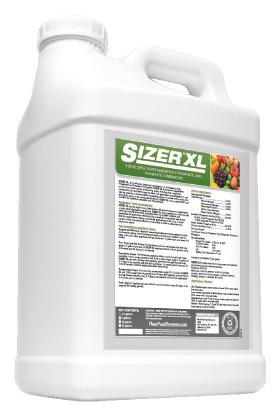

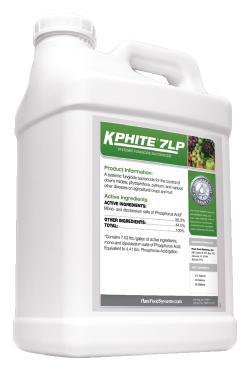
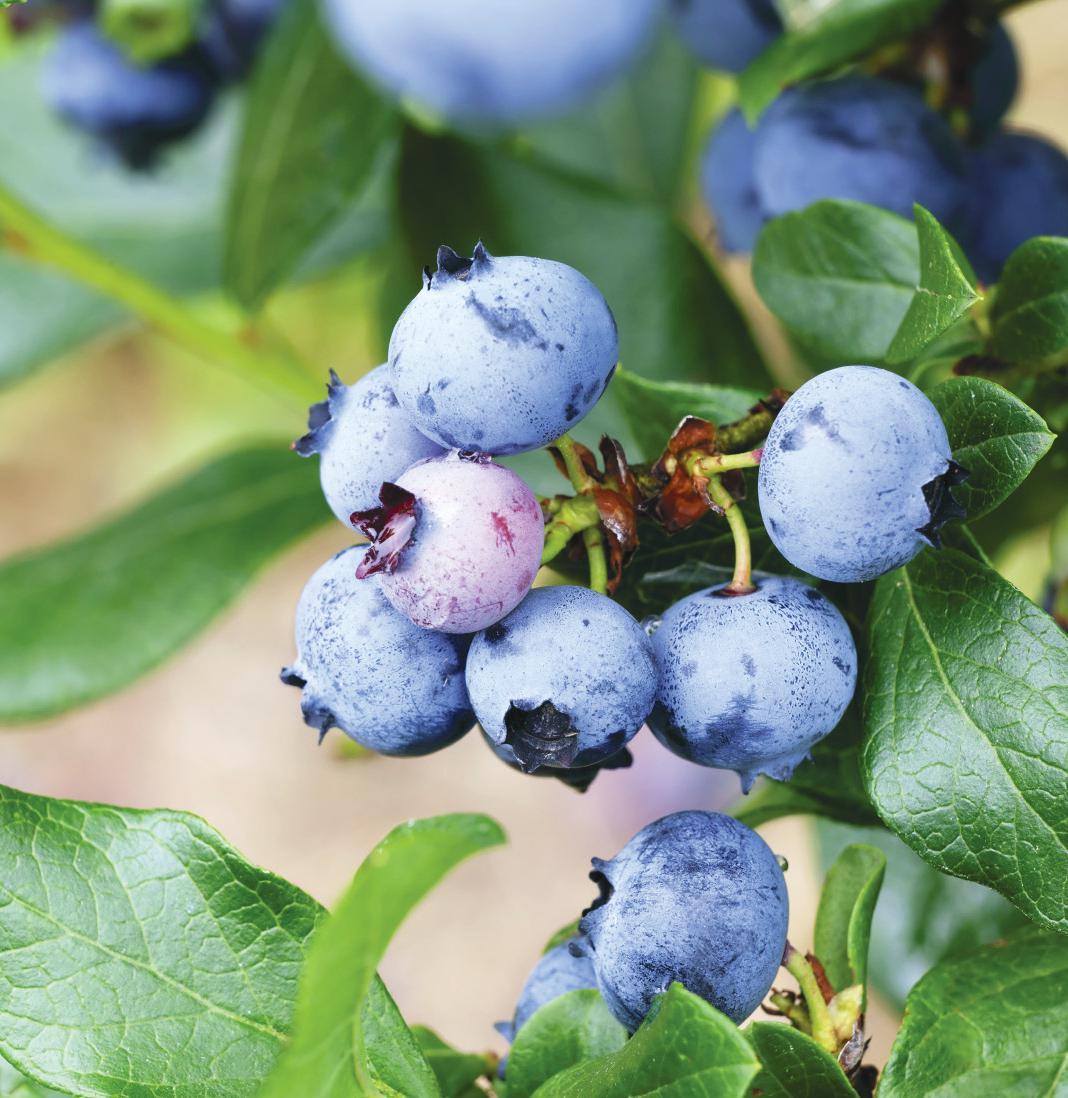
40 | The Blueberry News FloridaBlueberryGrowers.org THE SYSTEMIC COMBINATION FOR A S U P ERIOR B LUEBER R Y CR O P 800 -343 -77 75 • P.O. B OX 7 75 • ZEL LWOO D, FL 3 2798 • PlantFoodSystems com K-PHITE ® 7LP and Sizer® XL are registered trademarks of Plant Food Systems, Inc &






























































































































































































